
Non Toxic Living
P
This Topic Covers: The importance of
Living
Green for our household, our planet and ourselves.
How external and environmental factors, pollutants, cleaning products,
pesticides, air pollution, air fresheners, mold and lead, poison our air, poison
our water and poison our health.
Find inexpensive, non-toxic, alternatives for cleaning
products; Learn what to look for when you buy groceries;
Which foods have the most pesticides and chemicals; Which foods
you should eat organic; Learn which toxins are silently poisoning your health; Consumer
resources for you to voice your concerns and take action; Resources
on
why, on how, and where you can make a difference, and more...
Introduction
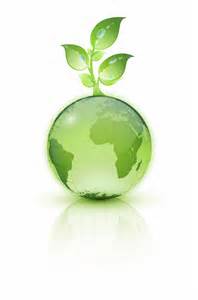
Source -
www.naturalnews.com
Exposure to a few toxic substances, or to a wide range of
molecules from a variety of synthetics may not trigger illness or disease in
you. But then again, it might. Medical science simply cannot predict who is
susceptible to which chemicals, or at what dosage levels, or how synergies
create toxic conditions in the human body. These risk factor uncertainties
during the normal course of our lives constitute a form of biological Russian
roulette that each of us play with our bodies every day based on our food,
medicine and environmental choices.
We cannot expect to totally eliminate these risk factors,
at least not in our lifetimes. Chemical toxins respect no boundaries and
trespass against us whenever we breathe or drink or eat. Our only reasonable
hope is to learn how to limit our risks and manage our exposures so that we
might increase our chances of leading healthy lives.
- Quote from
The Hundred Year Lie
www.ewg.org
-
Copyright ©
Environmental Defense Fund. Used by permission.
Most people use cosmetics and other personal care items without a
second thought, believing that the government oversees their safety.
Not so.
No health studies or pre-market testing are required for these products.
Americans’ frequent exposures to cosmetics and personal care
products raise questions about the potential health risks from the myriad of
unassessed ingredients in them. These ingredients migrate into the bodies of
nearly every American.
For instance, in August 2005, scientists from the University of
Rochester reported that prenatal exposure to phthalates — chemicals found in
personal care products and other consumer products — could cause the
reproductive organs of male infants to develop abnormally (Swan 2005)…
At the Environmental Working Group we have researched and
advocated personal care product safety for eight years and consider this
issue an integral part of our work to strengthen the system of public health
protections from industrial chemicals. Here’s why:
Personal care products are
manufactured with 10,500 unique chemical ingredients, some of which
are known
or suspected carcinogens, toxic to the reproductive system or known to
disrupt the endocrine system. Though
some companies make products that are safe to eat, others choose to use
dangerous ingredients like
coal tar and formaldehyde, both human
carcinogens, and lead acetate, a developmental toxin.
No premarket
safety testing is required for the industrial chemicals that go
into personal care products or the chemical industry as a whole. According
to the Office of Cosmetics and Colors at the federal Food and Drug
Administration, “…a
cosmetic manufacturer may use almost any raw material as a cosmetic
ingredient and market the product without an approval from FDA.” (FDA
2012)
The FDA does no systematic reviews of safety,
instead authorizing the cosmetics industry to self-police ingredient safety
through its Cosmetics Ingredient Review panel. Over its 36 years, this
industry panel has rejected only 11 ingredients as unsafe in cosmetics (CIR
2012). By contrast, the European Union has banned hundreds of chemicals in
cosmetics (European Commission 2012).
When risky chemicals are used in cosmetics, the stakes are
high. These
are not trace contaminants that may be measured in parts-per-million or even
parts-per-billion in food or water.
They are substantial components of
the
product,
just as flour is a primary ingredient in bread.
Cosmetic ingredients do not remain on the surface of the skin.
They are designed to penetrate, and they do.
Scientists have found many common cosmetic
ingredients in human tissues, including phthalates in urine, preservatives
called parabens in breast tumor tissue and persistent fragrance components
in human fat. Do the concentrations at which they are typically found pose
risks? For the most part, those studies have not been done. But a small but
growing number of studies serve as scientific red flags (Swan 2005,
Sathyanarayana 2008, Swan 2010).
top
Defining What is Natural
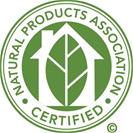
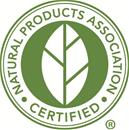
www.naturalproductsfoundation.org
-
Copyright © Natural Products Association
The natural personal care industry is growing five
times faster than regular personal care products. Roughly 63 percent of
people are more conscious of the natural ingredients that go into personal
care products than five years ago. But while public interest in natural
personal care products is growing stronger each day, research confirms
consumers are still confused about what constitutes a “natural” product.
Not everyone is going to automatically agree on what we
believe is natural. Therefore, we encourage consumers to do your own
research. To start with, we encourage you to keep in mind five important
questions when purchasing products and compare the answers to the Natural
Products Association’s standards given here:
On
average, what percent natural is the product?
The Natural Products Association standard requires
products to be 95 percent or more.
Does it include
any of these ingredients: Parabens, Sulfates, Chemical Sunscreens, Petro
Chemicals,Glycols, Pthalates, PEGs or PPGs, DEA/TEA, Synthetic Polymers,
Formaldehyde Donors or 1, 4-Dioxanes?
The Natural Products Association Standard for Personal
Care Products does not allow these ingredients. In addition, natural
alternatives are available. Natural products should contain only ingredients
that come from a renewable/plentiful source found in nature—in other words,
flora, fauna or mineral sources. Any synthetic ingredient must only be used
in a natural personal care product only when there is no viable natural
alternative ingredient available and only when there are absolutely no
suspected human health risks.
Truly natural products should not use any of these
industrial processes. They have the potential to change the chemical make-up
of ingredients that start out natural, so in the end, they aren’t natural
ingredients at all. Instead, natural processes like
distillation/condensation, extraction/steamed distillation/pressure cooking
and hydrolysis, should be used to maximize the purity of natural
ingredients.
On average,
what percent PCR (post consumer recycled) is the packaging?
Are they recyclable?
Our standard requires products labeled “natural” to use
biodegradable ingredients and the most environmentally sensitive packaging.
Is
the product tested on animals?
To meet our standard, an animal should never be tested
on either at the ingredient-level or of the final product.
Are any of these processes used:
Ethoxylation, Sulfination or
Polymerization?
Truly natural products should not use any
of these industrial processes.
They have the potential to change the chemical make-up
of ingredients that start out natural, so in the end, they aren’t natural
ingredients at all. Instead, natural processes like
distillation/condensation, extraction/steamed distillation/pressure cooking
and hydrolysis, should be used to maximize the purity of natural
ingredients.
top
How to
Know if Your Products Are Natural
www.npainfo.org –
Copyright © Natural Products Association
 To
protect and equip consumers to maximize their well being, NPA developed the
Natural Standard and Certification for Personal Care Products, a set of
guidelines that dictate whether a product can be deemed truly "natural." The
standard encompasses all cosmetic personal care products regulated and
defined by the FDA. To
protect and equip consumers to maximize their well being, NPA developed the
Natural Standard and Certification for Personal Care Products, a set of
guidelines that dictate whether a product can be deemed truly "natural." The
standard encompasses all cosmetic personal care products regulated and
defined by the FDA.
The Essence of the NPA Natural Standard
The NPA Natural Standard is based on natural ingredients, safety,
responsibility and sustainability.
Natural Ingredients: A
product labeled "natural" should be made up of only, or at least almost
only, natural ingredients and be manufactured with appropriate processes to
maintain ingredient purity.
Safety: A
product labeled "natural" should avoid any ingredient with a suspected human
health risk.
Responsibility: A
product labeled "natural" should use no animal testing in its development.
Sustainability: A
product labeled "natural" should use biodegradable ingredients and the most
environmentally sensitive packaging.
What the
NPA Natural Seal Means for You
Consumers: The
standard will help you become more educated about ingredients and processes
considered natural. It gives consumers the information you need to easily
identify which personal care products meet the standard for natural, and
make the best decisions when choosing products. Learn
more.
Find nearby retailers that sell natural products with the Natural Products Store Locator
top
The Meaning of Green

Source -
www.epa.gov -
US Environmental Protection Agency
Discovering a Sustainable Lifestyle:
Green living means
making sustainable choices about what we eat,
how we travel, what we buy, and how we use and dispose of it.
We can implement sustainability in our workplace practices, and by greening
the buildings we inhabit. Our everyday choices can create a sustainable
lifestyle.
www.greenamerica.org - ©Green America
What is Go Green?
It's a powerful way that responsible shoppers can promote greater corporate
responsibility and grow a just and environmentally sustainable marketplace.
Consumers and investors can send a strong
message to businesses by shifting their spending and investing to green and
fair trade businesses committed to helping, not harming, people and the
planet.
Get advice to green your home, your wardrobe, your
office and more. Find out how to invest in a clean environment. Find out
what others are doing to make healthy, just, and sustainable choices every
day.
Green America's Responsible Shopper...Provides you with
the real story about abuses by well-known companies, gives you actions to
promote corporate responsibility, and helps you green your life and world.
top
How Do I Go Green?
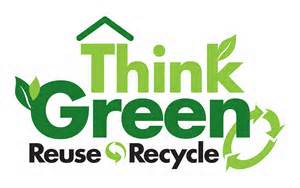
Going green is often simply a matter of replacing old
habits with new ones. Each time you make a conscious decision to conserve
natural resources, you take another step toward green living. Many ideas for
going green can be found
at
www.mygoinggreenideas.com. Here a just a few:
Turn Off Lights: Switch off lights as you leave a room, which saves
energy and reduces your electricity bill
Set Your Thermostat:
Set your thermostat above 78 degrees Fahrenheit in the summer and below 60
in the winter. Wear less clothing in summer and more in winter. Open windows
rather than running the air conditioner, if possible.
Conserve Water: Take
shorter showers. Turn water off while brushing your teeth or shaving. Fix
leaky faucets. Run your dishwasher and washing machine only when you have a
full load.
Recycle: Recycle
aluminum, cardboard, glass and plastic materials if possible. By doing so
you reduce the amount of waste headed to landfills.
Reuse: Find ways to
reuse things that can’t be recycled rather than throwing it away. Old
clothing can be used as rags. Large containers can be turned into planters.
Consider donating large items you no longer want or need.
Change Your Light Bulbs:
Switch to compact fluorescent bulbs which last longer and use less energy.
Bring Your Own Grocery Bags:
Reduce waste by bringing your own grocery bags to the store to use again.
Purchase reusable cloth grocery bags to keep in your car for trips to the
store.
Eat Greener: Support
locally grown produce which reduces greenhouse emissions by reducing the
demand for shipments of processed food products.
Carpool, Bike or Bus:
Carpool with your co-workers or take your bike when weather permits.
Familiarize yourself with your city’s public transportation and bus systems.
You’ll cut your gas bill and reduce your car emissions.
Unplug: Even when
appliances are turned off they continue to draw electricity. Unplug
seldom-used appliances or plug related appliances into a power strip to turn
off when finished using them. Unplug electronic chargers when not in use.
Go to www.greenlivingtips.com for
lifestyle guidelines and earth friendly advice about going green.
Source -
www.epa.gov -
US Environmental Protection Agency
Measure
Your Environmental Footprint:
Every person consumes a portion of Earth's total resources. We can calculate
an individual's consumption or Ecological
Footprint
each
year by the land required to grow our food, landfill our trash and generate
natural resources. For the average American, the land required to sustain
each of us is over 22 acres. If the entire population of the world consumed
this many resources, the current population would require more than one
Earth.
Another
way to determine your impact on the environment is to estimate your
household's greenhouse gas emissions. Calculate your carbon
footprint with
EPA's Greenhouse Gas Calculator. Learn more about things
you can do,
and here are some other tips:
Food: Buy
local and organic food
which requires less fuel for shipping or
petrochemical based fertilizers and pesticides
that can be harmful to human health and the environment.
Goods: Assess
products on the basis of their entire life-cycle, not simply the time you
use it. Support companies that will take back products after their useful
life and reuse the materials. Be informed
about the contents of personal care products
and pharmaceuticals.
Housing: Change
your incandescent light bulbs to compact fluorescent lights. The selection
of energy efficient types is expanding and you'll save money on your
electricity bill. Use strategies to green
your home.
If you have a yard, green
landscaping can
improve the sustainability of your yard.
Transportation: Use
mass transit and carpool whenever possible. Explore biking and walking
options and alternative fuels. If you drive, take the Drive
Smarter Challenge.
top
Green Shopping Tips

www.greenamerica.org - Get advice to green your home, your wardrobe,
your office and more. Find out how to invest in a clean environment. Find
out what others are doing to make healthy, just, and sustainable choices
every day.
www.thegreenguide.com - The
Green Guide is an invaluable resource for men and women, from young adults
to grandparents, striving for a healthy and “greener” lifestyle. It is
TGGI’s vision that one day The Green Guide will be, for millions of
consumers, the go-to source of information about practical every day,
environmentally responsible and health-minded product choices and actions.
www.greenchoices.org - Green Choices is about the choices we can make in
our everyday lives to protect our environment, for the benefit of all. We
aim to empower you with simple, direct information on green alternatives
which make a real, lasting difference.
www.thedailygreen.com
-
Consumer’s guide on green living, tips and advice, green
cuisine, green news, living green and weather watch.
www.goodguide.com
- Led by Professor Dara O'Rourke of UC Berkeley, GoodGuide's science team –
chemists, toxicologists, nutritionists, sociologists, and lifecycle analysis
experts – rates products and companies on their health, environmental and
social performance.
www.ecomii.com
-
The website was created to address the need for a single credible and
comprehensive resource for everything healthy and green. It includes
sections on natural health and healthy living as well as blogs and tips on
going green.
GoodGuide's 0 to 10 rating system helps
consumers quickly evaluate and compare products.
Our mission is to help you shop your values wherever you shop.
With GoodGuide,
you can:
-
Find better products that are healthy, green,
and socially responsible
-
Search or browse over 145,000 food, toys,
personal care and household products to easily learn about the best and
worst products in a category
-
Rely on our scientific expertise and
sophisticated rating system to simplify complex and confusing product
information
-
Get mobile advice while shopping in a store by downloading
our iPhone app
-
Create and share personalized favorites lists of
products that are right for you and your fa mily
top
Green Products & Services
Resources 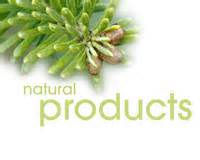
www.buygreen.com
BuyGreen.com is an eco-friendly home living superstore.
Offering everything from personal care products and clothing to kitchen and
office supplies, BuyGreen has it covered. At BuyGreen.com, we want to
provide the best possible buying experience by offering a wide range of
products, the tools you need to understand why a product qualifies as
'green’ and superior customer service.
We want to make available an eco-friendly alternative to every traditional
product you use today. We have the largest selection of rated and reviewed
green products.
www.greenlivingeveryday.com
Green Living Everyday is for people who care for
themselves and the earth. Items in our store range from organic, recycled,
fair-trade, and environmentally friendly. Along with our vast selection of
fair trade gifts, we also over a wide selection of composters, push mowers,
rain barrels, solar technology and natural remedy offerings.
gaiam.com
The largest online LOHAS
store there is, Gaiam offers an incredibly diverse selection of eco-friendly
and sustainable home living products.
We provide goods and services
specially designed for customers who value the environment, a sustainable
economy, healthy lifestyle, alternative healthcare, and personal
development.
Your go-to source to find sustainable household
goods, clothing, wellness products, videos and much more…
Green Directories
envirocenter.org -
The
Green Spot Directory:
We believe a sustainable economy is possible when
consumers spend locally with businesses that tread lightly on our
environment. The Green Spot is your online directory to local, green,
sustainable businesses.
www.organicconsumers.org - Find Green Products and Services in Your Area
www.greenpages.org -
Green Business Directory
top
The Purpose of Going Green
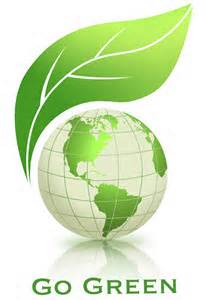
gogreeninitiative.org -
© Go Green Initiative
The purpose of 'going
green' is to address human illnesses that arise from exposure as well as damage to the
environment (water, soil, air) from disposal of these products.
The role
chemical exposure has in creating allergic sensitivities, reducing immunity, and
contributing to cancer and other diseases, is a long-respected field of research
in medicine. {Fact date=February 2007}
For example, research on human and animal exposure to
[formaldehyde] (formalin), [benzene] and other [solvents] has resulted in
legislation to limit exposure but has not completely banned these products.
{Fact date=February 2007} [http://www.noharm.org/us/pesticidesCleaners/issue]
Chemicals Used:
Harmful chemicals are prevalent not only in cleaning products but
also in foods, cosmetics, home construction, clothing and many industries. Among
the more common toxic ingredients are [phosphates], [sodium hypochlorite
chlorine bleach], [naptha] s and mineral spirits, [phthalates] found in
furniture polish, [ether]-type solvents, [methylene chloride], [butyl]
cellosolve and [petroleum] distillates found in oven cleaner, [sulfuric acid]
and [sodium hydroxide] in drain cleaners, alkylphenol ethoxylates (APEs) found
in detergents and disinfectants are suspected hormone disruptors, ammonia
which is poisonous when swallowed is extremely irritating to respiratory
passages when inhaled and can burn the skin on contact, indiscriminate use of
antibacterial cleansers containing triclosan may be contributing to the rise
of antibiotic-resistant germs, butyl cellosolve [ethylene glycol monobutyl
ether] is poisonous when swallowed and a lung-tissue irritant, chlorine
bleach [sodium hypochlorite] can irritate the lungs and eyes,
and in waterways can become toxic organochlorines, diethanolamine [DEA] can combine
with nitrosomes to produce carcinogenic nitrosamines that penetrate skin,
fragrances may contain phthalates, chemicals linked to reproductive
abnormalities and liver cancer in lab animals and to asthma in
children, phosphates, water softeners for detergents, contribute to algae
blooms which can kill off fish populations, sodium hydroxide, found in
drain, metal and oven cleaners, extremely irritating to eyes, nose and throat
and can burn tissues on contact, sodium lauryl sulfate, a
common sudsing
agent,
can penetrate the skin and cause contact dermatitis.
top
Green Cleaning
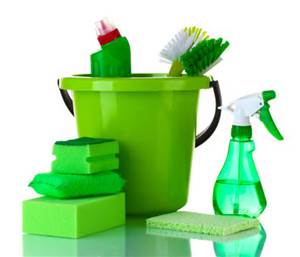
Content provided from the Wikipedia Encyclopedia
''Green
cleaning''
is a term that has been coined to describe a trend away from chemically reactive
and [toxic] cleaning products, which contain various toxic chemicals some of
which emit (volatile organic compounds) (VOCs) causing respiratory and
dermatological problems among other adverse effects.
Green cleaning
can also describe the way residential and industrial
cleaning products are manufactured, packaged and distributed. If the
manufacturing process is environmentally friendly and the products are
biodegradable, then the term 'green'
or eco-friendly may apply.
Standards set by the (United States Environmental
Protection Agency) (EPA) limit human and environmental exposure to toxic
chemicals but do not entirely eliminate them in general… Reading the small
print on labels is the only way to verify the components of a product but
manufacturing, packaging and distribution may all contribute to environmental
degradation.
gogreeninitiative.org -
Typically,
green
cleaning means products and processes that are not only as effective
at cleaning as traditional products, but that are also more cost effective when
evaluated over the length of the maintenance cycle. Recent advancements in
chemical technology have made it possible to develop cleaning products that are
as effective as traditional products, but that do not contain harsh
ingredients. Green
products are now available in a number of product areas.
top
Find Green
Cleaning Products
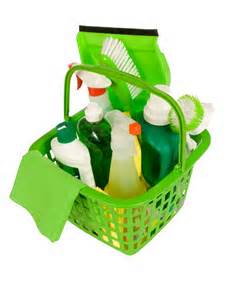
www.greenseal.org
-
Green Seal
is an independent non-profit organization dedicated to safeguarding the
environment and transforming the marketplace by promoting the manufacture,
purchase, and use of environmentally responsible products and services.
Green Seal focuses
exclusively on environmentally preferable products, purchasing, and operations. Green
Seal is the only U.S. organization that
offers an existing body of life-cycle environmental standards and that
recommends specific brands and models of environmentally responsible products
from a life-cycle point of view.
www.epa.gov
-
Geared
first to help federal purchasers, this site can help green vendors, businesses
large and small -- and consumers.
www.shaklee.net
-
The products are spectacular - pure, potent and proven to work. Our Nutrition,
Weight Management, Home Care and Personal Care products carry a 100%
Satisfaction Guarantee.
www.simplegreen.com
-
For more than 35 years, Simple Green has been
producing environmentally friendly cleaning products that are non-toxic and
biodegradable. Our current product line includes more than 20 different
cutting-edge cleaning products for home and professional use.
www.seventhgeneration.com
-
Seventh
Generation offers a complete line of non-toxic household products. All products
are designed to work as well as their traditional counterparts, but use
renewable, non-toxic, phosphate free and biodegradable ingredients as
much as possible, and are never tested on animals. They are as gentle on the
planet as they are on people and they don’t create harmful fumes or leave
harmful residues that may affect the health of your family or your pets.
top
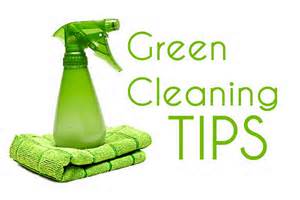 Difference between Cleaning vs. Sanitizing vs. Disinfecting Difference between Cleaning vs. Sanitizing vs. Disinfecting
disinfected.org
- Copyright © Disinfected.Org
“Cleans,” “Sanitizes” and “Disinfects”
are three different functions that the Environmental Protection Agency (EPA)
has defined.
-
“Clean”
is the physical removal of surface or area debris. Scrubbing with
detergent or soap, washing and rinsing with water, in that order, are
necessary to effect “clean.”
-
A product that “sanitizes”
means it can kill 99.9% of identified germs
as written on its label.
-
“Disinfect”
does the same thing, with a “nearly
100%” batting average.
Essentially, a sanitizer or disinfectant is used for
killing bacteria and viruses that can cause diseases. Most of the time
people use both of these two terms interchangeably and not many of them will
realize whether there is a difference between the two of them or not.
Ideally, agents that are used for sanitization are
different from those for disinfection and a look at sanitize
vs. disinfect will bring out these two differences clearly for an
understanding.
How They
Function: One thing that you need to know about in order to strike the
difference between them is to know how each one of them functions. Ideally,
when talking about disinfecting, you should realize that this action
normally involves the use of commercial products, such as heat or bleach in
order to destroy or kill bacteria found on the surfaces.
On the other hand, agents used for sanitization are
usually used in destroying germs on surfaces in order to make them
sufficiently safe to be used. This is one of the key aspects that you should
understand when looking at sanitize vs. disinfect.
It is known that sanitizers are
capable of destroying even 99.99% of germs. However, to achieve such
a high level of effectiveness, it is necessary to
point out that you must use them properly; otherwise the level of
their effectiveness will be lowered.
According to some experts,
disinfectants are known to be much more superior compared to the sanitizers.
This is because there are some types of pathogenic
bacteria that cannot be killed using the sanitizers. With this
sanitize vs. disinfect comparison, you will understand that disinfectants
are a much better alternative compared to sanitizers.
While sanitizers
can work perfectly well in a span of about 30 seconds,
disinfectants on the other hand work in a time frame of between 5 and 10
minutes. During this period, they are able to destroy most of the
bacteria effectively.
top
Which Natural Products Clean – Sanitize - Disinfect
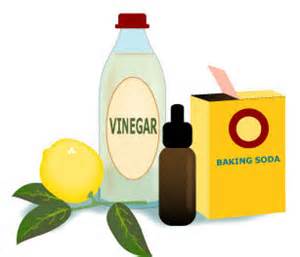
disinfected.org
- Copyright © Disinfected.Org
Baking Soda as
Cleaning : The use of baking soda for cleaning and as a
disinfectant has equally been
undermined and exalted. Admittedly, its
versatility is to be reckoned with and its expanse of action is neither
exclusive nor limited to the kitchen alone. Bakers know that baking soda is
responsible for making cookies chewy and cakes soft, housewives are aware
that it is indispensable as a kitchen sink cleanser, young women use it as
an exfoliant to get rid of dead skin cells and everybody knows how it
deodorizes stinky feet and even more stinky shoes and socks.
The use of clean, sanitize and disinfect are easily
interchangeable when making claims about a product’s efficacy. Arm and
Hammer has the words “baking, cleaning and deodorizing” but it has never
included “sanitizing” or even “disinfecting” on its boxes, although it does
say that it has “over 101 cleaning uses.”
The use of baking soda to purportedly “disinfect” must
have been mistakenly attributed to it, perhaps because people tend to
associate, or even confuse, the term “clean” with “wipe out.” And because
disinfectants “kill” germs, “kill” in this case becomes a synonym for “wipe
out” when describing baking soda disinfectant usages.
disinfected.org -
Copyright ©
Disinfected.Org
Hydrogen
peroxide as Disinfectant: This product has many other
roles in its capacity as a decontaminant and an algaecide where it is
applied in water gardens, aqua culture farms and commercial aquariums as
well. For many decades, hydrogen peroxide has been the unsung hero as a key
player in medical industry, disasters as well as a wide range of
disinfection applications.
Hydrogen
peroxide antiseptic is acquiring new roles day by day. This stems from
the fact that there are various features that make it a
competitive disinfectant compared to other
products on the market. Actually, its newly acquire roles are all as result
of the fact that it is non toxic, non polluting and
environmentally friendly. It is nowadays been seen as the answer to
many difficult questions that were hard to tackle in the past.
Hydrogen peroxide
disinfectant is increasingly being used in many procedures involved
dental sterilization. It has been widely used by many dentists when it comes
to teeth bleaching. Most health care providers
are adopting the use of hydrogen peroxide rather than other strong
disinfectants which are hard to break both among human beings and
environmentally as well.
Vinegar as
Disinfectant: In fact, experts say that 5%
vinegar has sufficient enough properties to destroy 99% of bacteria, 82% of
mold and 80% of viruses. This should not leave you asking does
vinegar disinfect but should tell you that it is
indeed, quite an effective disinfectant. With that said, let’s leave
it to rest that does vinegar really kill germs is effectively true,
yes it does. This explains why it is one of the common household
products that can clean surfaces prone to infections such as toilets,
floors, sinks and kitchen store.
Alcohol
as Disinfectant:
Alcohols are
highly effective when used to disinfect instruments and skin. They are quite
fast in their action and leave no residues behind. And the best thing is
that alcohols are inexpensive and still quite
effective just like any other general disinfectant.
However, you should know that
alcohol as a disinfectant is indeed flammable
and may not be able to kill some viruses. Evaporation of alcohol is
also very quick which minimizes the time span in which they are able to get
into contact with viruses and bacteria. Lastly, alcohol has the ability to
irritate the eyes so be careful in it’s application to surfaces and wear
gloves if necessary.
Iodine
as Disinfectant:
Iodine
-
Since you cannot always carry water from your home when traveling, carrying
iodine disinfectant is quite convenient and it assures you that you will be
using water free from germs contamination. Iodine has the capabilities of
killing those dangerous microorganisms which can make you suffer from
waterborne diseases and death has even been a consequence of using
contaminated water for consumption…
While iodine
disinfectant can be quite effective in purification of the water, you
are warned not to use water that has been purified using iodine or other
chemicals for a prolonged time period. Such water is best when used on short
term basis only. Try to disinfect clear water as much as possible as iodine
does not work very well in very dirty and cloudy water. If possible, only
water from flowing source should be used. Also, do not drink the water
immediately after adding the iodine to disinfect water as you should let it
to sit for some extra time for iodine to take effect.
When a person who has the flu comes into contact with
doorknobs, the TV remote control, sink faucet handles and the like,
the flu virus remains viable on
these objects between 2 and 8 hours. Other
than heat between 167° and 212°F, iodine-based
antiseptics, soap detergents, hydrogen peroxide and several types of alcohol
are effective against the flu virus if used in sufficient
concentration within a particular length of time. Alcohol can
be rubbed into the hands for 20 to 30 seconds or until it is absorbed by the
skin.
www.cdc.gov
Among the products recommended for home
disinfection of reusable objects are bleach, alcohol, and hydrogen peroxide.
APIC recommends that reusable objects (e.g.,
tracheostomy tubes) that touch mucous membranes be disinfected by immersion
in 70% isopropyl alcohol for 5 minutes or in 3% hydrogen peroxide for 30
minutes. Additionally, a 1:50 dilution of 5.25%–6.15% sodium hypochlorite
(household bleach) for 5 minutes should be effective 327-329.
Some environmental groups advocate "environmentally
safe" products as alternatives to commercial germicides in the home-care
setting. These alternatives (e.g., ammonia,
baking soda, vinegar, Borax, liquid detergent) are not registered with EPA
and should not be used for disinfecting because they are ineffective
against S. aureus.
Borax, baking soda, and detergents also are ineffective
against Salmonella Typhi and E.coli; however,
undiluted vinegar and ammonia are effective against S.Typhi and E.coli 53,
332, 333. Common commercial disinfectants designed for home use also are
effective against selected antibiotic-resistant bacteria 53.
top
Which
Household Products to Use and Which to Avoid
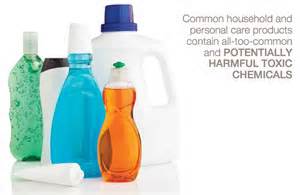
mcs-america.org -
Copyrighted © MCS America (MCSA)
Facts about Cleaning & Laundry Products
-
Indoor air is more seriously polluted than the
outdoor air, even in the largest and most industrialized cities.1
-
Laundry and fabric softener products contain
undisclosed hazardous chemicals with known health risks.2,5
-
Cleaning products, especially those with germ
killing properties, are harmful to health.6
-
Air fresheners actually worsen indoor air
pollution by adding toxic chemicals to the air.4
-
Analysis of fragranced products reveals
undisclosed chemicals with known irritant and neurotoxic
properties.3,5,7
-
Consumers need to make every effort to ensure
work, school, and home environments are clean, comfortable, and safe. It
is not sufficient to trust that products have been adequately tested
before they go to market. They have not.
Domestic Household Products to Avoid
-
All Fragranced Products
-
Fragranced Laundry Detergents, Fabric Softeners,
and Dryer Sheets
-
Air Fresheners
-
Window Cleaning Solution, All Purpose Cleaners,
Sprays, and Aerosols
-
Scouring Powder
-
Fragranced and/or Anti-Bacterial Vacuum Bags and
Trash Bags
-
Disinfectants, Solvents
-
Commercial or Industrial Chemicals and
Concentrated Products
-
Solvents
-
Clean is the absence of dirt and grime that
leads to odor. Toxic chemicals and strong fragrances merely cover up
odors at the expense of health. There are many safe and effective
cleaners.
Domestic Household Products to Use Instead
-
Laundry - borax,
baking soda, or fragrance free laundry detergent
-
Fabric Softener - white
vinegar in wash or towel wet with peroxide, tennis shoe, or tennis ball
in the dryer
-
Air Fresheners - white
vinegar, open windows, adequate ventilation, fresh herbs, and tea
-
Windows -
white vinegar or water & squeegee
-
All Purpose Cleaning -
white vinegar
-
Scouring Powder - baking
soda or borax
-
Disinfectant - peroxide
followed by white vinegar in separate cleanings.
-
Fragrance Free Products
Don’t Be Greenwashed! Just because a
product is ‘green’ or ‘all natural’ does not mean it is nontoxic.
To download detailed brochures with
inexpensive and safe household cleaning ideas, see:
www.npainfo.org
- Natural Products Association
Find Listings of Natural Certified Personal Care
Products
top
Natural Household Recipes
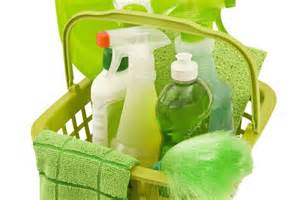
www.naturalhealthlifestyles.com
These products have proven just as effective as
common commercial products,
yet
are safe for you and the environment. Many household cleaners, including
all-purpose cleaner, glass cleaner, floor cleaner, and bathroom cleaner can be
made at home using ingredients such as baking soda, Borax, vinegar, and liquid
soap. Not only can changing our habits improve our health and the health of our
environment, it can also save money!
www.greenideasnetwork.org
– Household Recipes
Source -
www.goodhousekeeping.com
The ever-expanding arsenal of home cleaning products now includes several
dangerous weapons, loaded with strong, artificial colors and fragrances and
harsh cleansing agents like bleach, ammonia and acids. These chemicals can
produce indoor air pollution by off-gassing toxic fumes that can irritate
eyes and lungs. (Children and pets are most at risk.) Many cleaners also
contain unnecessary antibacterial agents (pesticides, technically), that can
actually make bacteria stronger, and more resistant to antibacterial drugs.
And commercial cleansers cost a lot. So make your own! Even the biggest
messes and toughest stains can be attacked effectively with
baking soda, borax, lemon juice
and other simple ingredients.
Baking Soda and Water: Dust
surfaces with baking soda, then scrub with a moist sponge or cloth. If you
have tougher grime, sprinkle on some kosher salt, and work up some elbow
grease.
Lemon Juice or Vinegar: Got stains, mildew or grease streaks? Spray
or douse with lemon juice or vinegar. Let sit a few minutes, then scrub with
a stiff brush.
Disinfectant: Instead
of bleach, make your own disinfectant by mixing 2 cups of water, 3
tablespoons of liquid soap and 20 to 30 drops of tea tree oil.
For additional
recipes -
www.goodhousekeeping.comtop
How to Sanitize Your Food
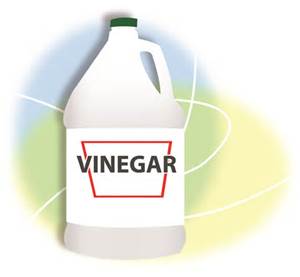
Retrieved from -
www.consumer.org
Marinating meat in vinegar kills bacteria and
tenderizes the meat. Use 1/4 cup vinegar for a 2-3 pound roast, marinate
overnight, and then cook without draining or rinsing the meat. Add herbs to
the vinegar when marinating as desired.
www.rd.com - © The Reader's Digest Association, Inc.
Tenderize and purify meats and seafood - Soaking a lean
or inexpensive cut of red meat in a couple of cups of vinegar breaks down
tough fibers to make it more tender-and in addition, kills off any
potentially harmful bacteria. You can also use vinegar to tenderize seafood
steaks. Let the meat or fish soak in full — strength vinegar overnight.
Experiment with different vinegar varieties for added flavor, or simply use
apple cider or distilled vinegar if you intend to rinse it off before
cooking
Wash store-bought produce - You can’t be too careful these
days when it comes to handling the foods you eat. Before serving your fruits
and vegetables, a great way to eliminate the hidden dirt, pesticides, and
even insects, is to rinse them in 4 tablespoons apple cider vinegar
dissolved in 1 gallon (3.7 liters) cold water.
top
Why
Recycle 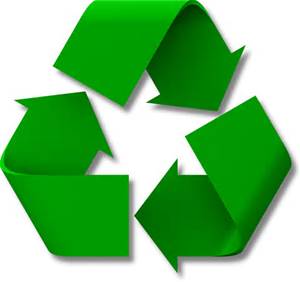
ngm.nationalgeographic.com
© National
Geographic Society reports,
Does it make sense to recycle?
The short answer
is:
Yes.
Consider the true cost of a product over its entire
life—from harvesting the raw materials to creating, consuming, and disposing
of it—and the scale tips dramatically in recycling’s favor. Every
shrink-wrapped toy or tool or medical device we buy bears the stamp of its
energy-intensive history: mountains of ore that have been mined (bauxite,
say, for aluminum cans), coal plants and oil refineries, railcars, assembly
lines. A product’s true cost includes greenhouse gases emitted in its
creation as well as use, and pollutants that cause acid rain, smog, and
fouled waterways.
Recycling—substituting scrap for virgin
materials—not only conserves natural esources and reduces the amount of
waste that must be burned or buried, it also reduces pollution and the
demand for energy. “You get tremendous Btu savings,” Hale says.
In an international study
published last year by the Waste & Resources Action Programme, a British
group, researchers compared more than 180 municipal waste management
systems. Recycling proved better for the environment than burying or burning
waste in 83 percent of the cases.
It makes sense to reuse products, of course, and to
reduce consumption altogether, as well as to improve initial product design.
But given the rising mounds of waste worldwide, it also makes sense to
recycle.
gogreeninitiative.org
-
© Go Green Initiative
According to the U.S. Census Bureau, the world
population is expanding at a mind-boggling rate. The world reached 1 billion
people in 1800; 2 billion by 1922; and over 6 billion by 2000. It is
estimated that the population will swell to over 9 billion by 2050. That
means that if the world’s natural resources were evenly distributed, people
in 2050 will only have 25% of the resources per capita that people in 1950
had.
The world has a fixed amount of natural resources - some of which are
already depleted. So as population growth greatly strains our finite
resources, there are fewer resources available. If we intend to leave our
children and grandchildren with the same standard of living we have enjoyed,
we must preserve the foundation of that standard of living. We save for
college educations, orthodontia, and weddings, but what about saving clean
air, water, fuel sources and soil for future generations?
Some of the greatest threats to future resources come from things we throw
away everyday. Household batteries and electronics often contain dangerous
chemicals that may, if sent to a local landfill, leak through the bottom
barrier and pollute the groundwater. This can contaminate everything from
the soil in which our food grows, to the water which will eventually come
out of aquifers and into our tap water. Many of these chemicals cannot be
removed from the drinking water supply, nor from the crops that are
harvested from contaminated fields. The risks to human health are
tremendous.
Throwing away items that could be recycled diminishes energy, water and
natural resources that could be saved by recycling.
Did you know...
-
For every ton of paper
that is recycled, the following is saved: 7,000 gallons of water; 380
gallons of oil; and enough electricity to power an average house for six
months.
-
You can run a TV for six
hours on the amount of electricity that is saved by recycling one
aluminum can.
-
By recycling just one
glass bottle, you save enough electricity to power a 100-watt bulb for
four hours.
The more we throw away, the more space we take up
in landfills. When a landfill becomes a “landfull”, taxpayers have to build
a new one. The less we throw away, the longer our landfills will last. The
amount of taxpayer money we save by extending the longevity of our landfills
is an important community benefit.
www.nrdc.org - © Natural Resources Defense Council
Recycling is one of the most feel-good and useful environmental practices
around. The benefits go way beyond reducing piles of garbage -- recycling
protects habitat and biodiversity, and saves energy, water, and resources
such as trees and metal ores. Recycling also cuts global warming pollution
from manufacturing, landfilling and incinerating.
But, recycling means a lot more than bringing your
newspapers and cans to the curb. Truly successful recycling involves
minimizing waste along the entire life cycle of a product, from acquiring
raw materials to manufacturing, using and disposing of a product. Most
environmental impacts associated with the products we buy occur before we
open the package, so buying products made from recycled materials is just as
important as sorting waste into the right bins.
And when we reduce the amount of stuff we buy in the
first place, and reuse what we can, we reduce the environmental harm
associated with acquiring raw materials and manufacturing.
Here are some tips that will help you cut down on
waste and boost your recycling skills:
Shop smart: Purchase
paper and other products for your home and office that are made with
post-consumer recycled content and packaged in recyclable materials. (See
our paper guides for businesses and consumers)
Buy in bulk when you can to reduce the amount of packaging that gets thrown
away.
Convenience is key: Put
collection bins in various places around your home and office to make
recycling convenient. Use different bins that follow your city's recycling
policies, (see New
York City's recycling guidelines as
an example) so you don't have to separate it out later. If you tend to
forget what's recyclable and what's not, make a sign like this
one and post it near your bins.
Don't forget to reuse: Paper,
plastic, glass and cans aren't the only items that should be diverted from
incinerators and landfills. Reduce the environmental impacts of organic
waste by composting food scraps, and by leaving short grass clippings on
lawns to decompose. Donate old clothing to homeless shelters, thrift stores,
animal shelters and other community organizations. Take advantage of
manufacturer take-back programs for your unwanted
electronics.
Make waste an endangered
species: Bring
your own reusable bags to local stores. Keep a ceramic mug for water or
coffee at work rather than using disposable paper or plastic foam cups. Most
cities in the United States have clean, drinkable water, so use tap water
(you can filter it if you'd like) and refillable water bottles instead of
buying bottled water.
Talk to your local
government and businesses:
Encourage local officials to consider incentives and more ambitious
recycling initiatives. Give positive feedback to store managers and
manufacturers who are making good environmental choices.
Take
your good habits on the road: Recycling
policies can vary from city to city and from state to state. A plastic
container you recycle at home might be garbage-bound in another community.
Or something you can't recycle at home might be recyclable in your school or
workplace. When traveling away from home, learn the local rules (from the
city's website or by reading signs) and follow them.
top
Recycling Facts
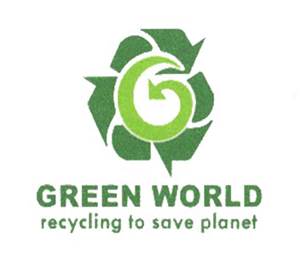
Source -
www.dosomething.org
-
The average person generates over 4 pounds of
trash every day and about 1.5 tons of solid waste per year.
-
In 2009, Americans produced enough trash to
circle the Earth 24 times.
-
Over 75% of waste is recyclable, but we only
recycle about 30% of it.
-
We generate 21.5 million tons of food waste each
year. If we composted that food, it would reduce the same amount of
greenhouse gas as taking 2 million cars off the road.
-
Recycling one aluminum can saves enough energy
to listen to a full album on your iPod. Recycling 100 cans could light
your bedroom for two whole weeks.
-
Recycling aluminum cans saves 95% of the energy
used to make alum cans from new material.
-
Americans throw away 25,000,000 plastic bottles
every hour.
-
Over 87% of Americans have access to curbside or
drop-off paper recycling programs.
-
In 2009, Americans threw away almost 9 million
tons of glass. That could fill enough tractor trailers to stretch from
NYC to LA (and back!).
-
In 2010, paper recycling had increased over 89%
since 1990.
-
If every American recycled just one-tenth of
their newspapers, we could save about 25 million trees each year.
Source -
recycleacrossamerica.org -
© Copyright Recycle
Across America
Recycle
Across America™ is specifically focused on introducing solutions that make
recycling more simple, comprehensive, effective and prevalent in the United
States. Recycle Across America™ represents what can be accomplished when an
industry unites to deliver simple solutions that have a large and measurable
impact on society for the greater good.
Plastic:
- Five plastic bottles (PET) recycled provides
enough fiber to create one square feet of carpet or enough fiber fill to
fill one ski jacket.
- Americans throw away 2.5 million plastic bottles
every hour.
- Recycling one ton of plastic bottles saves the
equivalent energy usage of a two person household for one year.
Cans:
- Every three months, Americans throw enough
aluminum in the landfills to build our nation’s entire commercial air
fleet.
- The average person has the opportunity to
recycle more than 25,000 cans in a lifetime.
- Recycling a single aluminum can saves enough
energy to power a TV for three hours.
- It requires 95% less energy and water to recycle
a can than it does to create a can from virgin materials.
Papers:
- Americans throw away enough office paper each
year to build a 12 foot high wall from Seattle to NY (a new wall every
year).
- Making paper from recycled paper reduces the
related contribution to air pollution 95%.
- Recycling a stack of newspaper just 3 feet high
saves one tree. More than 37% of the fiber used to make new paper
products in the U.S. comes from recycled sources.
Glass:
- Glass can be recycled and re-manufactured an
infinite amount of times and never wear out.
- Making glass from recycled material cuts related
water pollution by 50%.
- Recycling just one glass jar saves enough
electricity to light an 11 watt CFL bulb for 20 hours.
- More than 28 billion glass bottles and jars end
up in landfills every year -- that is the equivalent of filling up two
Empire State Buildings every three weeks.
Cardboard:
- Recycling cardboard only takes 75% of the energy
needed to make new cardboard.
- Recycling 1 ton of cardboard saves 46 gallons of
oil.
- Over 90% of all products shipped in the US are
shipped in corrugated boxes, which totals more than 400 billion square
feet of cardboard.
- Nearly 80% of all retailers and grocers recycle
their cardboard
Food Waste: (without paper product)
- Food waste can be used for composting and sold
to farmers or it can be provided as a food source for local animal farms
that meet federal, state and local regulations for food scrap usage.
- Almost half of the food in the U.S. goes to
waste - approximately 3,000 pounds per second.
- Food scraps make up almost 12% of municipal
solid waste generated in the U.S.
- Many schools and businesses are starting to
compost food waste on site.
Compost: (food waste with food-soiled paper products)
- Food and paper waste used for food can be
composted into nutrient rich soil and sold to farmers.
- Almost half of the food in the U.S. goes to
waste - approximately 3,000 pounds per second.
- Food scraps make up almost 12% of municipal
solid waste generated in the U.S.
- Many schools and businesses are starting to
compost food waste on site.
eWaste:
(electronic waste)
- In 2007, 82% equaling 1.8 million tons of
ewaste (various electronics e.g. TVs, cell phones, computers etc.) ended
up in landfills.
- In 1998, the National Safety Council study
estimated about 20 million computers became obsolete within 1 year. In
2007, that number increased to 40 million.
- Electronic waste total approximately 2% of the
waste stream in the U.S.
- Several states have now created mandatory
collection and recycling programs for electronics.
 environment.about.com environment.about.com
Reduce, Reuse, And Recycle:
Do your part to reduce waste by choosing reusable products instead of
disposables. Buying products with minimal packaging (including the economy size
when that makes sense for you) will help to reduce waste. And whenever you can,
recycle paper, plastic, newspaper, glass and aluminum cans. If there isn't a
recycling program at your workplace, school, or in your community, ask about
starting one. By recycling half of your household waste, you can save 2,400
pounds of carbon dioxide annually.
Concerned about the environment? Here are ways you
can get involved and make a difference. You'll find tips to reduce waste, find
eco-friendly products, and support community, government and corporate efforts
to help the environment...environment.about.com
top
Find a Recycling
Center
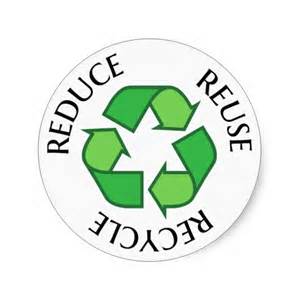
earth911.com
- Recycling is important, but it can
be complicated. What can’t go in your curbside bin? How many times can
something be recycled? What about really large or dangerous items? We’ve
rounded up answers to all these questions and more.
Also, search by your zip code for recycle location centers -
search.earth911.com
Find Recycling
Center for Computers, TVs
www.electronicstakeback.com -
The Electronics TakeBack Coalition (ETBC) promotes
green design and responsible recycling in the electronics industry. Our goal
is to protect the health and well being of electronics users, workers, and
the communities where electronics are produced and discarded by requiring
consumer electronics manufacturers and brand owners to take full
responsibility for the life cycle of their products, through effective
public policy requirements or enforceable agreements.
Guide to Recycling Your
Electronics:
If you want to get rid of electronic equipment that you no longer
use and want to protect the environment, follow these steps -
www.electronicstakeback.com/how-to-recycle-electronics
top
Buy Humanely
Raised Food
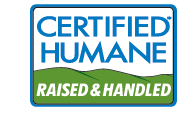 Humane
Farm Animal Care - In
“food animals, stress can affect meat quality... and general [animal] health-
Article in Agricultural Research Humane
Farm Animal Care - In
“food animals, stress can affect meat quality... and general [animal] health-
Article in Agricultural Research
Reference -
www.certifiedhumane.org
The
Certified Humane Raised and Handled®
-
The
Certified Humane Raised & Handled Label is a consumer certification and
labeling program. When you see the Certified Humane Raised & Handled label it
means that an egg, dairy, meat or poultry product has been produced with the
welfare of the farm animal in mind. Food products that carry the
label are certified to have come from facilities that meet precise, objective
standards for farm animal treatment. The
Certified Humane Raised and Handled® label assures consumers:
-
That the producer meets our standards and
applies them to animals from birth through slaughter.
-
Animals have ample space, shelter and gentle
handling to limit stress.
-
Ample fresh water and
a healthy diet of quality
feed, without added antibiotics or hormones.
-
Cages, crates and tie stalls are among the
forbidden practices, and animals must be free to do what comes
naturally. For example, chickens are able to flap their wings and dust
bathe, and pigs have the space to move around and root.
Producers must comply with food safety and
environmental regulations. Processors must comply with the American Meat
Institute Standards (AMI), a higher standard for slaughtering farm animals
than the federal Humane Slaughter Act.
View HFAC’s Fact Sheets for consumers.
The Fact Sheets provide information about specific humane issues as they
relate to farm animals covered by the Certified Humane® program.
www.certifiedhumane.org
Looking for Certified
Humane® products on the go?
Download our Mobile
App for iPhone and Android. Our website is also mobile accessible on all
devices.
Look for
the Certified Humane® products listed for each store when you shop. If
the meat in the butcher case is not marked, ask the butcher if the meat is
one of the brands listed for that store. Anyone can say they are
Certified Humane® but only those listed actually are.
You can
order online from some of the smaller producers that don't have retail
outlets. Most of them ship nationally.
If you're a restaurant or looking for food
service, check that option as well. Many distributors for these
products are listed.
foodalliance.org
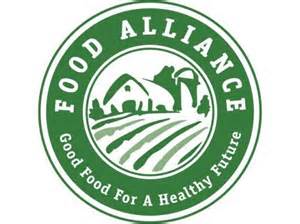 Find
Certified Suppliers That Meet the Following Criteria: Find
Certified Suppliers That Meet the Following Criteria:
Five certification standards
-
Crop Operations
The original Food Alliance sustainability
standard for farms. Covers fruit, vegetable, and cereal crops.
-
Livestock Operations
Covers beef cattle and bison, sheep and
goats, grassfed ruminants, pigs, poultry and eggs, and dairy products.
-
Farmed
Shellfish Operations
Covers oysters, clams, mussels and geoducks.
-
Nursery and
Greenhouse Operations
Covers woody ornamentals, annuals,
perennials, foliage plants, potted flowering plants and cut flowers.
-
Food Handling Operations
Covers packing, processing, and
distribution facilities.
top
Best
& Worst Seafood Choices
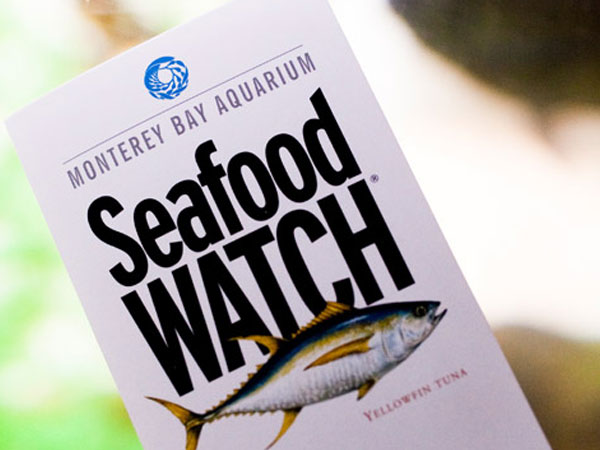
Source -
www.montereybayaquarium.org
The Monterey Bay Aquarium Seafood Watch program
helps consumers and businesses make choices for healthy oceans.
Our recommendations indicate which
seafood items are "Best Choices,"
"Good Alternatives," and which
ones you should "Avoid."
Why Do Seafood Choices
Matter?
Nearly 85% of the world's fisheries are fished to capacity, or overfished.
Our seafood choices have the power to make this situation worse, or improve
it. Seafood Watch recommendations don't hinge on any single issue. Instead,
they consider the fishery, habitat, species, management, and a host of other
factors that affect each species. In this way, Seafood Watch offers a
complete vision of sustainability...
Combining the work of conservation and
public health organizations, the Monterey Bay Aquarium has identified
seafood that is
"Super Green," meaning that it is
good for human health and does not harm the oceans. The Super Green list
highlights products that are currently on the Seafood Watch "Best Choices"
(green) list, are low in environmental contaminants and are good sources of
long-chain omega-3 fatty acids.
The
Super Green
list includes seafood that meets the following three criteria:
-
Low levels of
contaminants (below 216 parts per billion [ppb] mercury and 11
ppb PCBs)
-
The daily minimum of omega-3s (at least 250
milligrams per day [mg/d])*
-
Classified as a Seafood Watch "Best Choice" (green)
Contaminants in Seafood:
Seafood contaminants include metals (such as mercury, which affects
brain function and development), industrial chemicals (PCBs and dioxins) and
pesticides (DDT). These toxins usually originate on land and make their way
into the smallest plants and animals at the base of the ocean food web. As
smaller species are eaten by larger ones, contaminants are concentrated and
accumulated. Large predatory fish—like swordfish and shark—end up with the
most toxins. You can minimize risks by choosing seafood carefully. Use our
Super Green list and learn more about contaminants in seafood on the EDF
website
Our website offers a complete list of Seafood
Watch recommendations, with background information. We also print handy,
condensed pocket guides that consumers can use when shopping or dining out.
Pocket guides are available for six regions of the U.S.: West Coast,
Southwest, Central U.S., Southeast, Northeast and Hawaii. Each contains a
short list of recommendations for the most popular items in that region. We
also have national and sushi
versions of the pocket guides. All of our guides are updated every six
months. We also offer applications for iPhones and other mobile devices.
Best and Worst Seafood Choices
Pocket Guide -
Carry the pocket guide that’s right for your
region to help you choose ocean-friendly seafood wherever you live or travel. Click on your state on the map to determine the pocket guide
that’s right for you. If you live near a boundary between two regions, we
suggest that you look at both pocket guides and pick the one that lists the
seafood items commonly found where you live.
(Download and print here -
http://www.seafoodwatch.org/seafood-recommendations/consumer-guides)
View Additional
Resources at Which Fish I Should Avoid
top
Which Foods To
Eat Organic
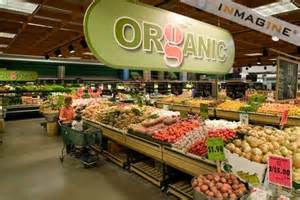
Top 12 Foods to Eat Organic:
Not all of us can afford to go 100% organic. The solution?
Focus on just
those foods that come with the heaviest burden of pesticides, chemicals,
additives and hormones.
www.eatingwell.com
- Of the fruits
and vegetables you
buy every week, which should you buy organic? The Environmental Working
Group's Shopper's Guide to Pesticides identifies fruits and
vegetables that have the highest and lowest pesticide residues. New to the
Dirty Dozen for the past two years are two extra foods, which they added as
a “Plus” category.
The EWG included the Plus category to highlight foods
that fell outside the normal criteria for the Dirty Dozen, but which are
often found to have traces of highly toxic organophosphate pesticides. If
you're worried about pesticides in your food, consider buying these 14
fruits and vegetables organic, starting with the most contaminated food.
top
Why Shop at Your Local
Farmers' Market

Source -
www.goodhousekeeping.com
There are more
than 7,000 farmers' markets in the United States…Buying fresh-picked
produce is not only tastier, but often more nutritious, since foods shipped
long distances can lose nutrients over time. And there's nothing like
savoring the variety of locally made artisanal foods.
Your purchase will also help the local economy, since
your food expenditure won't be going to a national corporation but a local
resident and his or her workers. Because local farmers' markets cut out the
middlemen, most of every dollar spent goes straight to the people who grow
your food. In a conventional grocery store, growers receive less than 10
cents on the dollar.
Finally, buying locally produced foods helps preserve
open space, rural landscapes and — if crops are grown using organic methods
— healthy local ecosystems. Working landscapes are a bulwark against sprawl
and often add significantly to a community's property values.
Local
Harvest Farmers' Markets
-
The
best organic food is what's grown closest to you. Use our website to find
farmers' markets, family farms, and other sources of sustainably grown food in
your area, where you can buy produce, grass-fed meats, and many other goodies.
Shop in our catalog for things you can't find locally.
- www.farmersmarket.com
Locally
grown meats
-
Find food in your neighborhood and when you
travel that is healthful, humane, better for the environment, and that supports
family farmers.
Where to Find Your Local
Farmers' Market
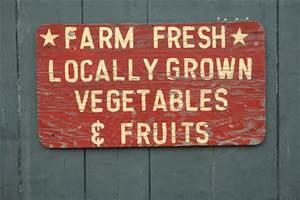
www.nutrition.gov
Use the USDA
Farmers Markets Search to find one near you. Due to their flexible
locations, some community farmers markets provide fresh, healthy foods when
other sources aren't as easily accessed. Learn more about how the USDA
helps to expand healthy food access through the development of local
food systems.
To find farmers' markets, organic
farms, and grocery co-ops in your area:
www.eatwild.com
Eatwild.com provides research-based
information about "eating
on the wild side." This means choosing present-day foods
that approach the nutritional content of wild plants and game—our original
diet. Evidence is growing on an almost daily basis that these wholesome
foods give us more of the nutrients we need to fight disease and enjoy
optimum health.
Few of us will go back to foraging in the wild for our food, but we can
learn to forage in our supermarkets, farmers markets, and from local farmers
to select the most nutritious and delicious foods available.
Eatwild was founded more than 10 years ago. It's mission was to promote the
benefits—to consumers, farmers, animals, and the planet—of choosing meat,
eggs, and dairy products from 100% grass-fed animals or other non-ruminant
animals fed their natural diets. Today it is the #1 clearinghouse for
information about pasture-based farming and features a state-by-state
directory of
local farmers who
sell directly to consumers.
Eatwild's Directory of Farms
lists
more than 1,300 pasture-based farms, with more farms being added each week.
It is the most comprehensive source for grass-fed meat and dairy products in
the United States and Canada. To
find pastured products near you, click on your state in the map below or
from the alphabetical
state list at
the bottom of this page. Or choose Canada or Outside
the US & Canada.
top
How to 'Green' Grocery Shop

www.ewg.org - Copyright © Environmental Working Group. Reproduced with
permission.
When shopping, look for:
Grass-fed or pasture-raised
meat. It has fewer antibiotics and hormones and in some cases may
have more nutrients and less fat; livestock live in more humane, open,
sanitary conditions.
Lean cuts: less fat
will likely mean fewer cancer-causing toxins in your body.
No antibiotics or hormones: reduces
unnecessary exposure and helps keep human medicines effective.
Certified organic: keeps
pesticides, chemical fertilizers and genetically modified foods off land,
out of water and out of our bodies.
Humane Certifications: Animal
Welfare Approved, Certified Humane, Global Animal Partnership and Food
Alliance Certified ensure that animals were raised humanely with enough
space for natural behaviors and without growth hormones or antibiotics.
Unprocessed, nitrite-free
and low-sodium: avoid lunchmeats, hot dogs, prepackaged smoked meats
and chicken nuggets.
Seafood: avoid air
freighted fish and most farmed salmon. Consult Monterey Bay Aquarium’s list
of the most sustainable seafood choices.
Consult
www.eatwellguide.org
or www.eatwild.com to find a nearby
store with greener, pasture-raised meat.
What are Genetically Modified Organisms (GMOs)?
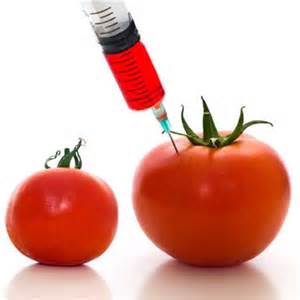
www.nongmoproject.org © NON-GMO
PROJECT
GMOs, or “genetically modified organisms,” are plants or animals that have
been genetically engineered with DNA from bacteria, viruses or other plants
and animals. These experimental combinations of genes from different species
cannot occur in nature or in traditional crossbreeding.
Virtually
all commercial GMOs are engineered to withstand direct application of
herbicide and/or to produce an insecticide. Despite biotech industry
promises, none of the GMO traits currently on the market offer increased
yield, drought tolerance, enhanced nutrition, or any other consumer benefit.
Meanwhile,
a growing body of evidence connects GMOs with health problems, environmental
damage and violation of farmers’ and consumers’ rights.
GMO's Safety
Concerns
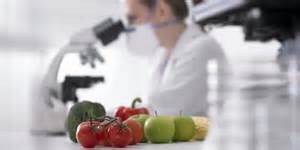
www.nongmoproject.org
© NON-GMO PROJECT
Are GMOs safe?
- Most developed nations do not
consider GMOs to be safe. In more than 60 countries around the world,
including Australia, Japan, and all of the countries in the European Union,
there are significant restrictions or
outright bans on the production and sale of GMOs. In the U.S., the
government has approved GMOs based on studies conducted by the same
corporations that created them and profit from their sale. Increasingly,
Americans are taking matters into their own hands and choosing to opt out of
the GMO experiment.
www.aaemonline.org
- American Academy of
Environmental Medicine
Despite these differences, safety assessment of GM foods has been based on
the idea of "substantial equivalence" such that "if a new food is found to
be substantially equivalent in composition and nutritional characteristics
to an existing food, it can be regarded as safe as the conventional food."4 However,
several animal studies indicate serious health risks associated with GM food
consumption including infertility, immune dysregulation, accelerated aging,
dysregulation of genes associated with cholesterol synthesis, insulin
regulation, cell signaling, and protein formation, and changes in the liver,
kidney, spleen and gastrointestinal system.
There is more than a casual association between GM foods and adverse health
effects. There is causation as defined by Hill's Criteria in the areas of
strength of association, consistency, specificity, biological gradient, and
biological plausibility.5 The strength of association and
consistency between GM foods and disease is confirmed in several animal
studies.2,6,7,8,9,10,11
Specificity of the association of GM foods and specific disease processes is
also supported. Multiple animal studies show significant immune
dysregulation, including upregulation of cytokines associated with asthma,
allergy, and inflammation. 6,11 Animal studies also show altered
structure and function of the liver, including altered lipid and
carbohydrate metabolism as well as cellular changes that could lead to
accelerated aging and possibly lead to the accumulation of reactive oxygen
species (ROS). 7,8,10 Changes in the kidney, pancreas and spleen
have also been documented. 6,8,10 A recent 2008 study links GM
corn with infertility, showing a significant decrease in offspring over time
and significantly lower litter weight in mice fed GM corn.8 This
study also found that over 400 genes were found to be expressed differently
in the mice fed GM corn. These are genes known to control protein synthesis
and modification, cell signaling, cholesterol synthesis, and insulin
regulation. Studies also show intestinal damage in animals fed GM foods,
including proliferative cell growth9 and disruption of the intestinal immune
system.6
Regarding biological gradient, one study, done by Kroghsbo, et al., has
shown that rats fed transgenic Bt rice trended to a dose related response
for Bt specific IgA. 11
Also, because of the mounting data,
it is biologically plausible for
Genetically Modified Foods to
cause adverse health effects in humans.
In spite of this risk, the biotechnology industry claims that GM foods can
feed the world through production of higher crop yields. However, a recent
report by the Union of Concerned Scientists reviewed 12 academic studies and
indicates otherwise: "The several thousand field trials over the last 20
years for genes aimed at increasing operational or intrinsic yield (of
crops) indicate a significant undertaking. Yet none of these field trials
have resulted in increased yield in commercialized major food/feed crops,
with the exception of Bt corn."12However, it was further stated
that this increase is largely due to traditional breeding improvements.
Therefore, because GM foods pose a serious health risk in the areas of
toxicology, allergy and immune function, reproductive health, and metabolic,
physiologic and genetic health
and are without benefit,
the AAEM believes that it is imperative to adopt the precautionary
principle, which is one of the main regulatory tools of the European Union
environmental and health policy and serves as a foundation for several
international agreements.13 The most commonly used definition is
from the 1992 Rio Declaration that states: "In order to protect the
environment, the precautionary approach shall be widely applied by States
according to their capabilities. Where there are threats of serious or
irreversible damage, lack of full scientific certainty shall not be used as
a reason for postponing cost-effective measures to prevent environmental
degradation."13
Another often used definition originated from an
environmental meeting in the United States in 1998 stating: "When an
activity raises threats to the environment or human health, precautionary
measures should be taken, even if some cause and effect relationships are
not fully established scientifically. In this context, the proponent of an
activity, rather than the public, should bear the burden of proof (of the
safety of the activity)."13
“Call to Action”:
With the precautionary principle in mind, because
GM foods have not been properly tested for human consumption, and
because there is ample evidence of probable harm, the AAEM asks:
-
Physicians to educate their patients, the medical community, and the
public to avoid GM foods when possible and provide educational materials
concerning GM foods and health risks.
-
Physicians to consider the possible role of GM foods in the disease
processes of the patients they treat and to document any changes in
patient health when changing from GM food to non-GM food.
-
Our members, the medical community, and the independent scientific
community to gather case studies potentially related to GM food
consumption and health effects, begin epidemiological research to
investigate the role of GM foods on human health, and conduct safe
methods of determining the effect of GM foods on human health.
-
For a moratorium on GM food, implementation of immediate long term
independent safety testing, and labeling of GM foods, which is necessary
for the health and safety of consumers.
How Can Consumers Avoid GMOs?
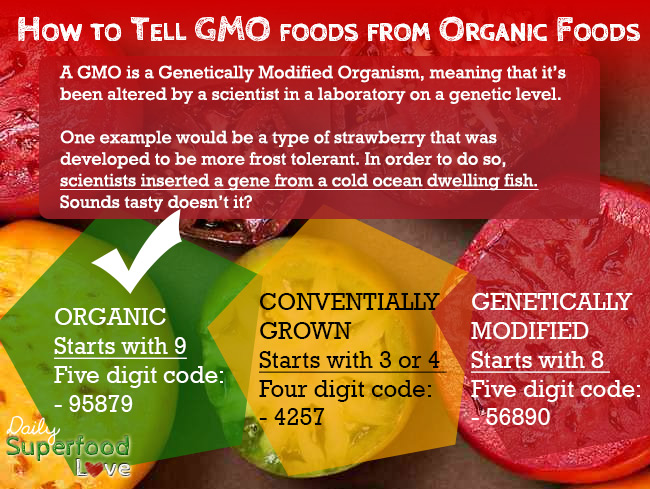
www.nongmoproject.org
© NON-GMO PROJECT
Are GMOs
labeled? -
Unfortunately, even though polls consistently show that a significant
majority of Americans want to know if the food they’re purchasing contains
GMOs, the powerful biotech lobby has succeeded in keeping this information
from the public. In the absence of mandatory labeling, the Non-GMO Project
was created to give consumers the informed choice they deserve.
Do Americans
want non-GMO foods and supplements?
- Polls consistently show that a significant majority of North Americans
would like to be able to tell if the food they’re purchasing contains GMOs
(a 2012 Mellman Group poll found that 91% of American consumers wanted GMOs
labeled). And, according to a recent CBS/New York Times poll, 53% of
consumers said they would not buy food that has been genetically modified.
The Non-GMO Project’s seal for verified products will, for the first time,
give the public an opportunity to make an informed choice when it comes to
GMOs.
How common are
GMOs? - In
the U.S., GMOs are in as much as 80%
of conventional processed food. Click
here for a current list of GMO risk crops.
How can I avoid GMOs?
- Choose food and products that are Non-GMO Project Verified! Click
here to see a complete list and follow
the following tips:
Buy Organic
- Certified organic products cannot
intentionally include any GMO ingredients. Buy products labeled “100%
organic,” “organic,” or “made with organic ingredients.” You can be doubly
sure if the product also has a Non-GMO Project Verified Seal.
Avoid at-risk ingredients
- If it’s not labeled organic or verified non-GMO: Avoid products made with
ingredients that might be derived from GMOs (see list). The eight GM food
crops are Corn, Soybeans, Canola, Cottonseed, Sugar Beets, Hawaiian Papaya
(most) and a small amount of Zucchini and Yellow Squash.
Sugar -
If a non-organic product made in North American lists “sugar” as an
ingredient (and NOT pure cane sugar), then it is almost certainly a
combination of sugar from both sugar cane and GM sugar beets.
Dairy Products
- may be from cows injected with GM bovine growth hormone. Look for labels
stating No rBGH, rBST, or artificial hormones.
Download Non-GMO Shopping Guides
-
The
Non-GMO Shopping Guide has features over 150 brands currently enrolled in
the Non-GMO Project.
This purse/pocket-sized guide will help you identify and avoid foods that
contain genetically modified organisms (GMOs) foods while you
shop -
http://www.nongmoshoppingguide.com/download.html
We devote an entire
page in each guide to help you uncover hidden GM ingredients on food labels
that often read more like a chemical periodic table. If you have an iPhone,
download our ShopNoGMO guide for free from the iTunes store.
Look for Non-GMO Project Seals
- Products that carry the Non-GMO Project Seal are independently verified to
be in compliance with North America’s only third party standard for GMO
avoidance, including testing of at-risk ingredients. The Non-GMO Project is
a non-profit organization committed to providing consumers with clearly
labeled and independently verified non-GMO choices. Look for dairy products
labeled "No rBGH or rBST,” or “artificial hormone-free.”
 What does
“Non-GMO Project Verified seal” mean? What does
“Non-GMO Project Verified seal” mean?
The verification seal indicates that the product
bearing the seal has gone through our verification process. Our verification
is an assurance that a product has been produced according to
consensus-based best practices for GMO avoidance:
What about the other products that I see on the store shelf that claim they
are “GMO free?”
While you may see other claims regarding GMO
status (e.g. “GMO free”), these are really not legally or scientifically
defensible, and they are not verified by a third party. The Non-GMO Project
is the only
organization offering independent verification of testing and GMO controls
for products in the U.S. and Canada. Buying products that are verified by
our program is the best way to support the sustained availability of non-GMO
choices in North America.
Are products bearing the “Non-GMO Project Verified” seal GMO free?
Unfortunately, “GMO free” and similar claims are not legally or
scientifically defensible due to limitations of testing methodology.
In addition, the risk of contamination to seeds, crops, ingredients and
products is too high to reliably claim that a product is “GMO free.” The
Project’s claim offers a true statement acknowledging the reality of
contamination risk, but assuring the shopper that the product in question is
in compliance with the Project’s rigorous standard.
The website url is included as part of the Seal to ensure that there is
transparency for consumers who want to learn more about our verification.
While the Non-GMO Project’s verification seal is not a “GMO free” claim, it is trustworthy,
defensible, transparent, and North America’s only
independent verification for
products made according to best practices for GMO avoidance.
top
Hazards - Pesticides
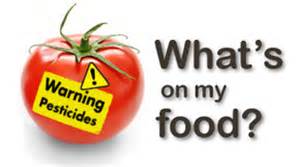
www.whatsonmyfood.org
© Copyright Pesticide Action Network
North America
Q:
How much pesticide exposure is too much?
A:
Depends on the pesticide. Depends on the person.
Depends on the timing and type of
exposure.
What we do know is this:
Pesticide regulations in the U.S. are well behind much of the rest of the
industrialized world. This is mostly because agrichemical corporations like
Monsanto have too much influence in Washington, but also because pesticide
regulation in the U.S. does not adequately account for things like additive and synergistic effects.
Since the Environmental Protection Agency (E.P.A.) regulates most chemicals
on a chemical-by-chemical basis, the combined and cumulative effects of a
mixture of pesticides are nearly impossible for them to address – and so
they usually don’t.
Given the
complexities of chemical causality and disease-formation,
the smart solution would be to follow the European Union’s lead and
adopt the "precautionary principle"2 as
the basis for regulatory decision-making. Put simply, this approach
prioritizes protecting human health when there is significant doubt about
the safety of a product. By contrast, pesticides and industrial chemicals in
the U.S. are innocent until proven guilty. It often takes decades to prove a
chemical guilty.
Meanwhile, we are exposed to dozens of pesticides
in the food we eat, water we drink and air we breathe. People working on
farms or living in rural areas near non-organic agricultural fields face
even higher exposure levels.
How Are We Exposed?
-
In Our Bodies
-
On the Farm
-
In the Environment
-
On Our Plates
In Our Bodies:
Most of us are born with persistent pesticides and other chemicals already
in our bodies, passed from mother to child during fetal development. The
human health impacts linked to pesticide exposure range from birth defects
and childhood brain cancer in the very young, to Parkinsons’ Disease in the
elderly. In between are a variety of other cancers, developmental and
neurological disorders, reproductive and hormonal system disruptions, and
more.
On the
Farm:
Farmers and farm workers are some of the hardest working people on the
planet. Yet they and their families bear the highest health costs and face
the greatest risks of pesticide exposure. Farm workers in particular remain
the least protected class of workers in the U.S. – last year another slavery
case was brought in Florida on behalf of farm workers there. Poisoning
incidents among farm workers are vastly underreported – yet in California
alone, hundreds of cases of pesticide poisoning are documented every year.
Occupational exposure to pesticides in acute cases range from dizziness and
nausea to death; chronic exposures are linked to the same array of diseases
listed above plus a few more listed below.
In the
Environment: Pesticides don’t stay where they’re applied. They drift
from their target and are carried in our air, oceans, rivers, groundwater
and soil. They contaminate ecosystems and can poison fish, birds and
wildlife. Water supplies around the world contain measurable amounts of
pesticides, including atrazine. Atrazine, a suspected endocrine disruptor
recently banned in Europe, is the most commonly used herbicide in the U.S.
Besides heavy use in industrial farming, pesticides are
used in or near playing fields, parks, schools, public gardens, golf
courses, grocery stores, offices, apartment buildings, hotels and resorts,
airplanes, cruise ships -- the list goes on. Rural communities are routinely
contaminated by pesticide drift, while city dwellers may trace pesticide
residues on their shoes to public parks and even their apartment’s common
areas.
On Our Plates:
Does eating organic make a difference? When researchers compared
the levels of pesticide breakdown products in the bodies of children who eat
organic and conventional diets, they found children who eat
mostly
organic foods carry fewer pesticides in their bodies. The good news is
that some of these pesticides break down fairly quickly, which means
increasing your consumption of organic foods can have an immediate impact on
your pesticide exposure levels.
By eating food produced organically or without
pesticides, not only will you be reducing the amount of pesticide in your
body, you will be helping create a better environment for other people, the
planet, and future generations. By engaging in political action to change
our food system, you'll be part of making sure that everyone can eat their
meals without pesticides on the side.
Find out which
pesticides are on your food
with this valuable searchable by food, tool -
Click Here - What
Pesticides Are On My Food.
What’s On My Food? is a
searchable database designed to make the public problem of pesticide
exposure visible and more understandable.
How does this tool work? We link pesticide food
residue data with the toxicology for each chemical, making this information
easily searchable for the first time
If you don't see a favorite food, check here
www.whatsonmyfood.org.
Source -
www.beyondpesticides.org
The common diseases affecting the public’s health are all too well-known in
the 21st century:
asthma, autism
and learning
disabilities, birth
defects , diabetes,
Parkinson’s and Alzheimer’s,
and reproductive
dysfunction
diseases, and several types of cancer.
Their connection to pesticide exposure continues to strengthen despite
efforts to restrict individual chemical exposure, or mitigate chemical
risks, using risk assessment-based policy.
Read article
reviews showing the mechanistic
evidence lending support to the concept that either acute or chronic
low-level inhalation or ingestion of pesticides may trigger these diseases.
The Pesticide-Induced
Diseases Database, launched by Beyond Pesticides,
facilitates access to epidemiologic and laboratory studies based on real
world exposure scenarios that link
public health effects to pesticides. The scientific literature documents
elevated rates of chronic diseases among people exposed to pesticides, with
increasing numbers of studies associated with both specific illnesses and a
range of illnesses. With some of these diseases at very high and, perhaps,
epidemic proportions, there is an urgent need for public policy at all
levels –local, state, and national—to end dependency on toxic pesticides,
replacing them with carefully defined
green strategies.
top
Natural
Alternatives to Pesticides

Source
-
www.beyondpesticides.org
Provides the public with useful information on pesticides
and alternatives to their use.
With this information, people can and do protect themselves and the environment
from the potential adverse public health and environmental effects associated
with the use and misuse of pesticides.The organization's
primary goal is to effect change through local action, assisting individuals and
community-based organizations to stimulate discussion on the hazards of toxic
pesticides, while providing information of safe alternatives.
The quarterly newsletter, Pesticides and You (PAY) is
one way we inform and provide a voice for pesticide safety and alternatives.
Additionally, our Daily News Blog provides the most current information
day-to-day updates on pesticide issues. Beyond Pesticides has available
publications to assist you with pest and pesticide related issues.
Source -
www.beyondpesticides.org
Least Toxic Control of
Pests in the Home and Garden:
If you must use a pesticide, you should the
least toxic pesticide available. Boric acid, formulated from a natural
mineral, is an effective ant and cockroach stomach poison. When properly
applied, it has a relatively low toxicity compared to other pesticides.
Further, it does not evaporate into the indoor air of the structure, unlike
many other pesticides. Look for boric acid that has less than one percent of
inert ingredients, therefore you have a better idea of what you are applying
and its risks than with most other pesticides. While boric acid is somewhat
slower acting than other materials, it is highly effective over a long
period of time. But remember, all pesticides are poisons designed to kill,
and should be handled carefully and with respect. Boric acid should be
applied only in areas where it will not come in contact with people - cracks
and crevices, behind counters, and in baseboards. Applicators should wear
protective clothing, gloves, and a filter mask.
The following Least Toxic
Control of Pests factsheets can be ordered individually or as a compilation
through How To
Fact Sheets
www.niehs.nih.gov
- Natural
recipe
formulas for ants, files, fleas, cockroaches, bees, wasps, and moths.
Source -
www.beyondpesticides.org
Are you looking for a pest management
company that can take care of a pest problem safely without using dangerous
pesticides? It is difficult in today's marketplace to sort through the
safety claims and the meaning behind words such as "safe" or "harmless."
Because of this, we have put together a
growing directory of companies that are interested in providing the services
you want, without poisoning you, your family, or the environment.
The directory is intended to be used for
pest problems in homes, commercial sites, schools, parks, golf courses, and
more.
top
Natural Insect Repellent Recipes
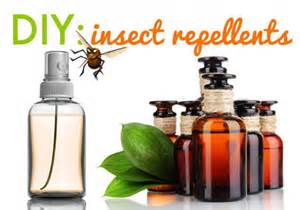
Source -
www.goodhousekeeping.com
Natural insect repellents take only a few minutes to
make and they are truly effective. Repellent Soap: Add 10-15 drops of
essential oils per ounce of liquid Castile soap (like Dr. Bronner's soaps,
$13 for a 32-ounce bottle at amazon.com).
Try essential oils such as lemon balm (citronella), pennyroyal, lavender,
and rose geranium. Wash before and after spending time outdoors.
Homemade Insect Repellent Recipe:
- 10-25 drops essential oil. Try lavender, rose
geranium (for ticks), coriander seeds, peppermint, cajeput and citronella
- 2 tablespoons vegetable oil
- 1 tablespoon aloe vera gel
(optional)
Combine the ingredients in a glass jar; stir to blend.
Dab a few drops on your skin or clothing.
Homemade Insect Repellent Recipe 2:
- 25 drops essential oil (see above)
- 1/4 cup
water or organic apple cider vinegar
Combine the ingredients in a glass jar. Shake to blend.
Dab some on your skin or clothing.
Read more: Best
Natural Insect Repellents and Homemade Herbal Bug Sprays - The Daily Green
top
Hazards -
Chemicals
in Cleaners
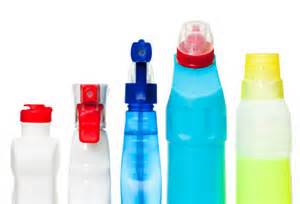
noharm.org - Copyright © Health Care Without Harm
Why are Chemicals a Health Problem?
The ubiquitous exposure to toxic chemicals in everyday life has increasingly
become a health concern. Unfortunately, many products used in health care
contribute to hazardous exposures — including cleaners and disinfectants,
phthalates in medical devices, flame retardants in furniture, formaldehyde
in furniture and solvents in labs. Emerging scientific research is raising
the level of concern about the health impacts of
chronic chemical exposures. We now
know that:
-
Even small doses of chemicals can cause disease
— interfering with sexual development, disrupting hormones and causing
cancer at very low levels.[1]
-
Children and developing babies are most vulnerable. See Our Stolen Future.
-
Hundreds of synthetic chemicals are found in human breast milk and in
the cord blood of babies in the womb. See Body Burden: The Pollution in Newborns (pdf)
-
Chemicals can act like drugs in our body, disrupting systems at low
levels of exposure, and potentially causing harm in combination. See Bringing Order to Chemical Chaos (doc)
...Despite their role as places of healing, health care institutions use a
surprising number of highly toxic chemicals on their premises, including pesticides, cleaners
and disinfectants and fragrance
chemicals. As these
chemicals vaporize, they contribute to
poor indoor air quality, which has been identified as one of the top
environmental risks to public health.
Patients are
particularly vulnerable to indoor air quality threats, since many have
compromised respiratory, neurological or immunological systems and/or
increased chemical sensitivities. The U.S. Joint Commission on Accreditation
of Hospital Organizations (JCAHO) has also expressed concern over the
growing number of respiratory problems among health care workers.
The good news is that health care facilities can manage pests and provide a
clean and sanitary environment without
the use of toxic chemicals.
www.greencleancertified.com
©2014 Green Clean Certified
One in
five people experiences health problems when exposed to fragrances, whether in
perfumes, air fresheners or other household consumables such as laundry
detergent and deodorant. Fragrances in these products can trigger asthma and
allergy attacks or worse. Most fragrance chemicals are respiratory
irritants that trigger and compound asthma, allergies, sinus problems and worse.
top
Hazards -
Chemical Look Up
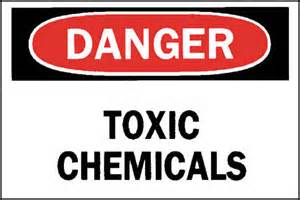
www.ewg.org
-
Copyright © Environmental Working Group.
Reproduced with permission.
To learn about the safety of ingredients in
personal care products, EWG has compiled an electronic database of ingredient labels
for body care products and cross-linked these ingredients with large
databases describing chemical toxicity and government determinations. The
database also contains information about cosmetics ingredient restrictions
in Canada, Japan and the European Union.
We consider the prevalence of possibly dangerous chemicals in
personal care products
cause
for
concern, and action! Much study remains to be done on exposure levels
and health risks. But what we do know shows that such study — and direct
consumer action to avoid known toxic ingredients — is essential.
What are the
limits of EWG’s Skin Deep? Skin Deep’s product ratings are based on the known hazards
associated with ingredients listed on labels. These ratings represent EWG’s
best effort to
present solid information on cosmetic safety. But the answers are not as clear as we would like. Due to the
weakness of the FDA’s cosmetics rules, many products with “green” ratings contain ingredients that have not been tested. These
products appear to be free of ingredients that we know or suspect to present
health hazards. But absence of evidence is not proof of safety. There may be
chemical hazards that scientists have yet to identify. In cases where data
are lacking, a “limited data” or “no data” rating is shown alongside the
green hazard score.
EWG’s ratings are subject to revision based on new evidence in
the scientific literature or new determinations by government bodies
regarding the safety of chemicals used in these products.
EWG’s ratings are based on data suggesting that certain
ingredients are hazardous. But we add a significant caveat:
in most cases it is impossible to predict whether a particular product poses
a health hazard. Actual health risks, if any, will vary based on how much
exposure each person has to a toxic ingredient, as well as that person’s
age, health status, genes and other factors.
For practical purposes, EWG’s ratings represent the best
available information on the safety of personal care product ingredients. As
science advances, Skin
Deep will embrace new insights into the safety of
chemicals in personal care products.
Make
safer choices about personal care products for you and your family.
Search over 66,000 products to know what’s in your products, are they toxic
and to find better brands!
Cosmetic
Database
- Search makeup, hair care, nail polish, skin care,
fragrance, oral
products, sun products and baby products.
Shoppers Guide to Pesticides in Produce -
EWG analyzed
pesticide residue
testing data
from the U.S. Department of Agriculture and Food and Drug
Administration to come up with rankings for these popular fresh produce
items. All
48 foods are listed below from worst to best (lower
numbers = more pesticides).
To see full list…
2012 Guide to
Healthy Cleaning - Search more than 2, 000 products for air
fresheners, laundry, floor care, bathroom, all purpose, furniture and
kitchen products.
www.scorecard.org
Pollution in Your
Community:
Get an in-depth pollution report for your county, covering air,
water, chemicals, and more.
Resource for information about pollution problems
and toxic chemicals by zip code... See which geographic areas and
companies have the worst pollution records.
An
online
resource for identifying environmental and health polluting substances
in household products and chemicals, to learn what health risks may be
associated with those chemicals.
www.scorecard.org
Outlines and
provides detailed information on human health hazardous on more
than 11,200 chemicals, including all the chemicals used in large
amounts in the United States and all the chemicals regulated under major
environmental laws. You can search for information by typing in the chemical's
name (or any common synonym) or the chemical's standard identification number
(Chemical Abstracts Service or CAS registry number).
National
Institute of Health
Household Database of Cleaning Products
for Known Hazards:
Search Products by Brand Name, Type of
Product, or Manufacturer
National
Institute of Health
What's under your
kitchen sink, in your garage, in your bathroom, and on the shelves in your
laundry room? Learn more about what's in these products, about potential health
effects, and about safety and handling.
This database links over 12,000 consumer brands to health effects from
Material Safety Data Sheets (MSDS) provided by manufacturers and allows
scientists and consumers to research products based on chemical ingredients.
The database is designed to help answer the following typical questions:
-
What are the chemical ingredients and their percentage in specific
brands?
-
Which products contain specific chemical ingredients?
-
Who manufactures a specific brand? How do I contact this manufacturer?
-
What are the acute and chronic effects of chemical ingredients in a
specific brand?
-
What other information is available about chemicals in the
toxicology-related databases of the National Library of Medicine?
The mention of specific products and brands at this site does not constitute
or imply a recommendation or endorsement by the National Library of
Medicine.
top
Hazards - Mold
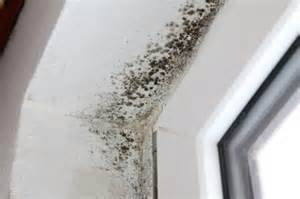
National
Institute Of Health
Indoor molds can grow on virtually any surface, as long as
moisture, oxygen, and organic material are present. When molds are disturbed,
they release tiny cells called spores into the surrounding air. Exposure to
these spores can produce symptoms such as nasal and sinus congestion, eye
irritation and blurred vision, sore throat, chronic cough, and skin rash.
After contact with certain molds, individuals with chronic
respiratory disease may have difficulty breathing and people who are
immunocompromised may be at increased risk for lung infection. A study conducted
by NIEHS-funded scientists shows that mold exposure during the first year of
life may increase the risk of childhood asthma.
What can I do to get rid of
mold in my home? According to the U.S. Department of Housing and Urban
Development (HUD), residents can do any of the following to prevent, and or
get rid of, mold in their homes:
-
Keep your house clean and dry.
-
Fix water problems, such as roof leaks, wet
basements, and leaking pipes or faucets.
-
Make sure your home is well ventilated, and
always use ventilation fans in bathrooms and kitchens.
-
If possible, keep humidity in your house below
50 percent, by using an air conditioner or dehumidifier.
-
Avoid using carpeting in areas of the home that
may become wet, such as kitchens, bathrooms, and basements.
-
Dry floor mats regularly.
Retrieved from
www.mnn.com
- Mother Nature Network
Whether your home is new or old, there are specific steps you can take to
make it resistant to mold. Mold affects indoor air quality and can make
homes difficult to sell. Follow these mold-prevention tips, and you’ll
breathe easier, in more ways than one.
Tips for existing homes:
It’s important to remember that no action to make your home mold resistant
will be successful if you have a perpetual moisture problem or if mold has
already taken hold. Inspect your home thoroughly for problem areas, and keep
in mind that mold can hide in places you can’t see, such as inside ductwork
or above ceiling tiles. If you suspect you already have a problem, talk to a
certified mold inspector to help resolve it before taking these steps to
prevent mold growth.
-
Be vigilant of areas of potential moisture and clean up spills and
repair leaks immediately, removing water-damaged furniture and fabrics
if they cannot be dried out completely.
-
Use dehumidifiers to reduce humidity to 30 to 50 percent and fans to
increase air flow in your home, especially if you live in a hot, humid
climate.
-
Regularly clean and maintain roof gutters.
-
Regularly clean and maintain AC unit drip pans and drainage lines.
-
Vent moisture-producing appliances, like clothes dryers and stoves, to
the outside.
-
Raise the air temperature
in your home so moisture doesn’t end up on surfaces as condensation.
-
Open closet doors and doors between rooms and move
furniture away from walls and corners to allow air to move freely
through your home.
-
Ventilate crawl spaces, and install heavy-duty
plastic sheeting over dirt to prevent moisture from coming up from the
ground.
-
Add a mold retardant like Taheebo tea to houseplant
water to stave off growth in soil and on leaves.
-
Clean and vacuum your home regularly, removing
those tasty food sources, like dust particles, that mold feeds on.
The EPA publication, "A
Brief Guide to Mold, Moisture, and Your Home", is also available in PDF
(English (PDF, 20
pp., 257 K) and Spanish (PDF,
20 pp., 796 K)). This Guide provides information and guidance for homeowners
and renters on how to clean up residential mold problems and how to prevent
mold growth.
top
Natural Household Remedies For
Mold
Source -
frugallysustainable.com
Tea Tree
Spray:
*Tea tree oil is one of the best ways to kill mold naturally. To make this
spray, simply mix 1 teaspoon of tea tree oil per 1 cup of water. Load
mixture into a spray bottle, shake well to combine, and spray directly on to
areas of mold. Do NOT rinse.
Vinegar:
After cleaning the mold with a mixture of castile soap and hot water. Spray
a generous amount of straight white vinegar on to the problem areas. In the
shower, I keep a spray bottle full of vinegar to spray on the tub and tile
after each use. Works like a charm in the prevention department!
Read
more here…
Grapefruit Seed Extract Spray:
In a spray bottle combine 20 drops of grapefruit seed extract and 1 cup of
water. Shake well to combine. Spray the problem areas. Do NOT rinse and
allow to dry. Find
grapefruit seed extract here…
Hydrogen
Peroxide Spray:
Mix 1 part 3% hydrogen peroxide and 2 parts water. Spray directly on to mold
and allow it to dry. Note: Be sure only to make as large a batch as you will
need for one application at a time.
top
Hazards - Lead
Please
Link to Environmental Toxins for In-Depth Hazards of Lead & Lead in
Cosmetics
Hazards
- Mercury
Please
Link to Environmental Toxins for In-Depth Topics
top
Hazards Water
Please
Link to Water Health Risks for In-depth Information
top
What Are Endocrine Disruptors?
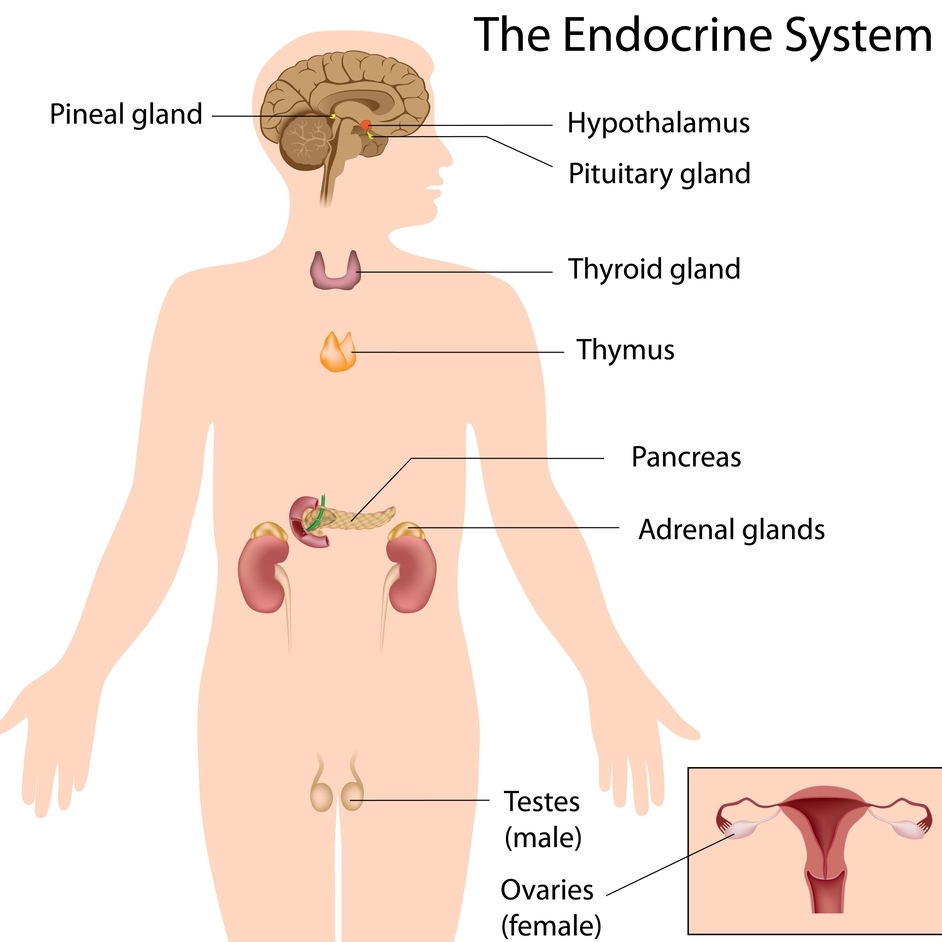
Reference -
www.niehs.nih.gov
- National Institute of Health
Endocrine disruptors are chemicals that may interfere with
the body’s endocrine system and produce adverse developmental,
reproductive, neurological, and immune effects in both humans and wildlife.
A wide range of substances, both natural and man-made, are thought to cause
endocrine disruption, including pharmaceuticals, dioxin and dioxin-like
compounds, polychlorinated biphenyls, DDT and other pesticides, and plasticizers
such as bisphenol A.
Endocrine disruptors may be found in many everyday
products– including plastic bottles, metal food cans, detergents, flame
retardants, food, toys, cosmetics, and pesticides, causing
developmental, reproductive, neurological and immune effects. The NIEHS supports
studies to determine whether exposure to endocrine disruptors may result in
human health effects including lowered fertility and an increased incidence of
endometriosis and some cancers. Research shows that endocrine disruptors may
pose the greatest risk during prenatal and early postnatal development when
organ and neural systems are forming. To read more… www.niehs.nih.gov
toxtown.nlm.nih.gov
Endocrine disruptors are chemicals that may interfere with the production or
activity of hormones in the human endocrine system. These chemicals may
occur naturally or be manufactured. The term “endocrine disruptors”
describes a diverse group of chemicals that are suspected or known to affect
human hormones. Effects on human hormones can range from minor to serious
depending on the specific endocrine receptor and the amount of exposure.
Because these chemicals are found in products you use every day and you are
exposed to many endocrine receptors at the same time, it is difficult to
determine the public health effects of these chemicals.
The human endocrine system is responsible for controlling and coordinating
many body functions, including the production of hormones. The human
endocrine system includes the pancreas, pituitary, thyroid, adrenal, and
male and female reproductive glands.
Endocrine disruptors interfere with the production, release, transport,
metabolism, or elimination of the body’s natural hormones. They can mimic
naturally occurring hormones, potentially causing overproduction or
underproduction of hormones. They may also interfere or block the way
natural hormones and their receptors are made or controlled.
Endocrine disruptors include dioxins, PCBs,
DDT, and some other pesticides.
Suspected endocrine disruptors include phytoestrogens and fungal estrogens,
the herbicide atrazine, phenols such as bisphenol
A (BPA), and
plasticizers such as phthalates.
Many products and industrial processes use and release several
naturally–occurring heavy metals that affect hormone actions and
reproduction, including arsenic, cadmium, lead,
and mercury.
How might I be exposed to endocrine disruptors?
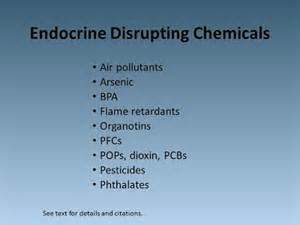
Chemicals that might be endocrine disruptors are commonplace in daily life.
You can be exposed to endocrine disruptors by breathing, eating, drinking,
or touching them. Exposure can occur through air, water, soil, food, and
consumer products. You may be exposed through contaminated food,
contaminated groundwater or drinking water, combustion sources, and
contaminants in consumer products.
At home, you can be exposed to minute amounts of possible endocrine
disruptors through food, beverages, and medicines. You can be exposed if you
use products that contain endocrine disruptors, such as plastics, cleaning
products, bottles, and cans. You can be exposed if you eat contaminated
species, including contaminated fish. You can be exposed to the herbicide
atrazine if you live or work on a farm.
You may be exposed if you use pesticides and other garden chemicals. You can
be exposed by leakage from landfill areas.
Sewage discharge and runoff may
carry pollution that includes endocrine disruptors from factories, fields,
and yards into waterways.
At work, you may be exposed to endocrine disruptors if you work at a
facility that manufactures products or uses processes containing these
chemicals, or burns medical waste. You may be exposed if you work on a farm
or facility that uses pesticides and herbicides.
www.nrdc.org
-
©National Resources Defense Council
What are some likely routes of exposure to
endocrine disruptors? Exposure
to endocrine disruptors can occur through direct contact with pesticides and
other chemicals or through ingestion of contaminated water, food, or air.
Chemicals suspected of acting as endocrine disruptors are found in
insecticides, herbicides, fumigants and fungicides that are used in
agriculture as well as in the home. Industrial workers can be exposed to
chemicals such as detergents, resins, and plasticizers with endocrine
disrupting properties. Endocrine disruptors enter the air or water as a
byproduct of many chemical and manufacturing processes and when plastics and
other materials are burned. Further, studies have found that endocrine
disruptors can leach out of plastics, including the type of plastic used to
make hospital intravenous bags. Many endocrine disruptors are persistent in
the environment and accumulate in fat, so the greatest exposures come from
eating fatty foods and fish from contaminated water.
How Can Endocrine
Disruptors Affect My Health?
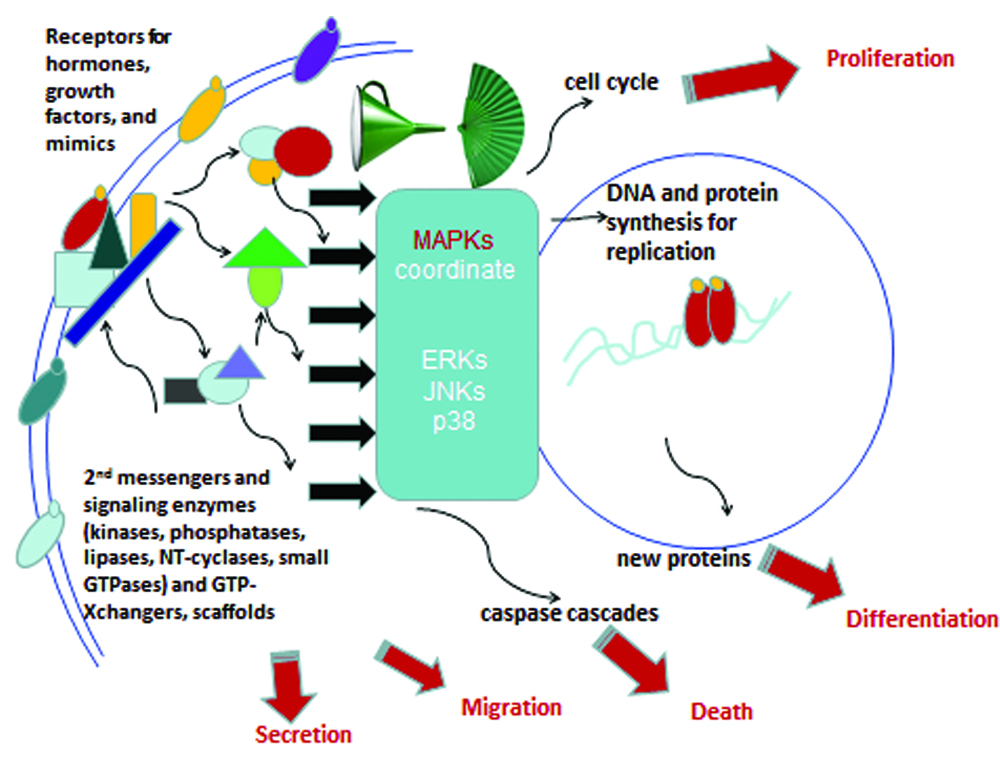
toxtown.nlm.nih.gov
Different types of endocrine disruptors can affect your health in different
ways. It is important to remember that the amount of exposure to an
endocrine disruptor may be as important as how toxic the endocrine disruptor
is. According to the World Health Organization’s International Programme on
Chemical Safety, there is still uncertainty about some links between human
health effects and exposure to endocrine disruptors. Some endocrine
disruptors are listed as human carcinogens or as "reasonably anticipated to
be human carcinogens" in the Twelfth Report on Carcinogens published by the
National Toxicology Program. Arsenic, cadmium, and TCDD dioxin are human
carcinogens. DDT, lead, PCBs, and phthalates are anticipated to be human
carcinogens.
Endocrine disruptors may interfere with the production or activity of
hormones in the endocrine system. They may cause reduced fertility and an
increase in some diseases, including endometriosis and some cancers. Human
health concerns about endocrine disruptors include reproductive effects,
such as sperm levels, reproductive abnormalities, and early puberty.
Exposure of infants and fetuses to endocrine disruptors can affect the
developing reproductive and nervous systems and organs. Other human health
concerns include nervous system and immune functions.
Retrieved from
www.iatp.org
-
Institute for Agriculture and Trade Policy
While diet and exercise are important factors in
the obesity epidemic, an emerging body of science demonstrates that
exposures to chemical obesogens may be important contributors. A number of
chemicals known to disrupt hormones also appear to affect
the size and number
of fat cells or hormones that regulate appetite and metabolism.
Read in entirety...
www.iatp.org -
Obesogens.pdf
www.nrdc.org
-
©National Resources Defense Council
How do we know that endocrine disruptors are dangerous? Many
plant and animal species are showing signs of ill health due to exposure to
endocrine disrupting chemicals. For example, fish in the Great Lakes, which
are contaminated with polychlorinated biphenyls (PCBs) and other man-made
chemicals, have numerous reproductive problems as well as abnormal swelling
of the thyroid glands. Fish-eating birds in the Great Lakes area, such as
eagles, terns, and gulls, have shown similar dysfunctions.
Scientists have also pointed to endocrine disruptors as the cause of a
declining alligator population in Lake Apopka, Florida. The alligators in
this area have diminished reproductive organs that prevent successful
reproduction. These problems were connected to a large pesticide spill
several years earlier, and the alligators were found to have endocrine
disrupting chemicals in their bodies and eggs.
Should humans be concerned for their health based on evidence that fish,
birds and alligators have been affected? Yes.
All vertebrates (fish, amphibians, reptiles, birds, and mammals, including
humans) are fundamentally similar during early embryonic development.
Scientists can therefore use the evidence acquired on other species to make
predictions about endocrine disrupting effects on humans.
Is there direct evidence that humans are susceptible to endocrine
disruption? Yes.
In the 1950s and 1960s pregnant women were prescribed diethylstilbestrol
(DES), a synthetic estrogen, to prevent miscarriages. Not only did DES fail
to prevent miscarriages, but it also caused health problems for many of
these women's children. In 1971, doctors began reporting high rates of
unusual vaginal cancers in teenage girls. Investigations of the girls'
environmental exposures traced the problem to their mothers' use of DES. The
girls also suffered birth defects of the uterus and ovaries, and immune
system suppression.
Are children at greater risk from endocrine disruptor exposure? Yes.
Because endocrine disruptors affect the development of the body's vital
organs and hormonal systems, infants, children and developing fetuses are
more vulnerable to exposure. And as was the case with DES, parents' exposure
to certain chemicals may produce unexpected -- and tragic -- effects in
their children, even decades later.
These days don't chemicals have to be safe to be allowed on the market? No.
The majority of the more than 2,000 chemicals that come onto the market
every year do not go through even the simplest tests to determine toxicity.
Even when some tests are carried out, they do not assess whether or not a
chemical has endocrine interfering properties.
See
Global Threat of Endocrine Disruptors
top
Threat of
BPA Plastic Containers
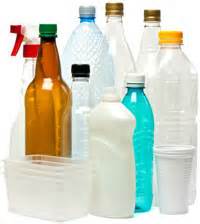
Source -
www.greencleancertified.com
Consumers who drink water (or ingest any food) contained in
certain hard and soft plastic bottles can expose themselves to health risks
associated with chemicals in the plastic. The culprit?
Phthalates.
The older the plastic, the higher the risks may be.
Consumers may be wise to check the bottle’s expiration date before drinking
the water contained within. To read
more…www.greencleancertified.com
Source -
www.goodhousekeeping.com
You may have read or heard lately about Bisphenol-A
(BPA) and its many disturbing side effects. It was developed in the 30's
as a synthetic estrogen, but is used mostly today in polycarbonate plastic.
It's found in sunglasses, CD's and the fillings in your teeth, and is used
to coat the inside of tin cans and make plastic shatterproof.
Unfortunately, BPA can activate estrogen receptors that
lead to the same effects as the body's own estrogens. Some hormone
disrupting effects in studies on animals and human cancer cells have been
shown to occur at levels as low as 2-5 parts per billion.
These health
problems include lowered sperm count and infertile sperm in men, and
exposure during development has been proven to have carcinogenic effects and
produce precursors of breast cancer. BPA has been shown to have
developmental toxicity, carcinogenic
effects, and possible neurotoxicity.
So what about all the plastic baby bottles made with
BPA out there? The Environment California Research & Policy Center published
a report in
February that found that five of the most popular baby bottles brands
(Avent, Dr. Brown's, Evenflo, Gerber and Playtex) leach enough of this
developmental, neural and reproductive toxicant into the liquids that come
into contact with them to cause harm in lab animals.
Scientists have linked
very low doses of BPA exposure to cancers, impaired immune function, early
onset of puberty, obesity and diabetes. In one recent study, a single, low
dose of BPA administered to a newborn rat resulted in hyperactive behavior.
The U.S. Centers for Disease Control and Prevention found BPA in the urine
of over 95% of people they tested.
Since our book The
Complete Organic Pregnancy was published we've seen public awareness of
the dangers of BPA increase, but glass baby bottles are still not readily
available. ...Evenflo's has a shatterproof
glass bottles, and a company called Born
Free has released a natural BPA-free alternative plastic bottle.
The study includes some other ways to limit your
child's exposure to this toxic chemical:
At the store, parents should select baby bottles that
are made from glass or a safer non-polycarbonate plastic. At home, parents
should avoid washing plastic dishware with harsh dishwashing soap and hot
water, which may allow chemicals to leach out of the plastic. For a useful
tip sheet, parents should visit our toy safety page.
In June 2006 San Francisco banned the sale of baby
bottles and other products for young children containing BPA, but the ban
was never enforced, and in May 2007 the city repealed it.
BPA has been known to leach from the plastic lining
of canned foods. There are no government safety standards limiting the
amount of BPA in canned food. Manufacturers use 6 billion pounds of it a
year.
The
Environmental Working Group published a survey
of BPA in U.S. canned foods in March and found BPA in over half of 97
cans of name-brand fruit, vegetables, soda, and other commonly eaten canned
goods.
They also found:
Of all foods tested, chicken soup, infant formula, and
ravioli had BPA levels of highest concern.
Just one to three servings of foods
with these concentrations could expose a woman or child to BPA at levels
that caused serious adverse effects in animal tests.
For 1 in 10 cans of all food tested, and 1 in 3 cans of
infant formula, a single serving contained enough BPA to expose a woman or
infant to BPA levels more than 200 times the government's traditional safe
level of exposure for industrial chemicals. The government typically
mandates a 1,000- to 3,000-fold margin of safety between human exposures and
levels found to harm lab animals, but these servings contained levels of BPA
less
than 5 times lower than doses that harmed lab animals.
top
Which Plastics to Avoid
Reference -
www.goodhousekeeping.com
Ditching the synthetic material known as plastic is a
tough endeavor for any American, even the greenest among us. In our everyday
lives, it’s everywhere. It’s up to us to be vigilant about which plastic
products we’re choosing to use and which
ones must be avoided due to potentially toxic effects that can have
serious consequences for our health. One trick you can use to figure out
which plastics to avoid is to decode
the recycling symbols and knowing what those numbers inside the
triangular recycling code mean.
Here are three to avoid:

Plastic No. 3
- Found in condiment bottles, teething rings,
toys, shower curtains, window cleaner and detergent bottles, shampoo
bottles, cooking oil bottles, clear food packaging, wire jacketing, medical
equipment, siding, windows and piping, No. 3 plastics are at risk of
releasing toxic breakdown products like phthalates into food and drinks.
Also, the manufacturing of PVC is known to release highly toxic dioxins into
the environment.
Plastic No. 6
- Better known as polystyrene or Styrofoam, No. 6 plastics are found in
disposable plates and cups, meat trays, egg cartons, carry-out containers,
aspirin bottles and compact disc cases. You should particularly watch out
for insulated Styrofoam cups which, when heated, can release potentially
toxic breakdown products like styrene into your coffee or tea. Number 6
plastics have also become notorious for being one of the most difficult
plastics to recycle.
Plastic No. 7
- The so-called "miscellaneous" plastic, No. 7 is a catch-all for various
types of plastics, including those found in baby bottles, three- and
five-gallon water bottles, 'bullet-proof' materials, sunglasses, DVDs, iPod
and computer cases, signs and displays, certain food containers and nylon.
Number 7 plastics are made up of various resins, which fit into no other
categories; while some are safe, some are suspect. Some contain Bisphenol A
(BPA), a synthetic estrogen that could disrupt the human hormone system,
causing various health effects.
The Smart Plastics Guide, from the
Institute for Agriculture and Trade Policy, includes easy-to-read
information on all seven labels for plastic products, health and
environmental risks of chemicals used in plastics, the latest on green
chemistry and tips for safer use of plastics in storing food.
top
What can I do to reduce my risk of exposure? 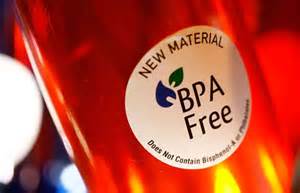
www.nrdc.org ©
Natural Resources Defense Council
-
Educate yourself about endocrine disruptors, and educate your family and
friends.
-
Buy organic food whenever possible.
-
Avoid using pesticides in your home or yard, or on your pet -- use baits
or traps instead, keep in your home especially clean to prevent ant or
roach infestations.
-
Find out if pesticides are used in your child's school or day care
center and campaign for non-toxic alternatives.
-
Avoid fatty foods such as cheese and meat whenever possible.
-
If you eat fish from lakes, rivers, or bays, check with your state to
see if they are contaminated.
-
Avoid heating food in plastic containers, or storing fatty foods in
plastic containers or plastic wrap.
-
Do not give young children soft plastic teethers or toys, since these
leach potential endocrine disrupting chemicals.
-
Support efforts to get strong government regulation of and increased
research on endocrine disrupting chemicals.
Source -
www.exrx.net
There has
been put forth some recommendations for the general public to protect
themselves and their families from reducing their potential exposures to
endocrine disruptors. They are as
follows:
-
Eliminate
consumption of
foods
from plastic lined cans – instead buy BPA free can
products
- Avoid
canned beverages including canned soda and beer
- Avoid
plastic food packaging and storage –
instead buy BPA free plastic containers
- No
plastic of any kind should be placed in heat, particularly the microwave
(National Toxicology Panel)
- Avoid
putting plastics in the dishwasher or using harsh detergents. Instead
use warm soapy water. (National Toxicology Panel) –
unless they are BPA free containers
- Choose
foods in glass bottles instead of plastic or metal containers with
plastic liners
- Soy
foods, containing a natural estrogens, may offer limited protection
-
Avoid prolonged skin contact with cash
register receipts and plastics containing PV
- For a list of
green
chemistry bio-based certified plastic products, see
www.bpiworld.org
Non Toxic & Organic Product Lines
Online Organic
Shopping
Take
Action Links

mindthestore.saferchemicals.org
TAKE ACTION: Tell
the
nation's top ten retailers to get tough on toxic chemicals in consumer
products!
Retailers have the power to make substantial improvements in public
health and safety, and with that power comes a moral obligation, a corporate
social responsibility. Many of the retailers have gotten started, but they
need to do more. And because they care about their customers, you can help
them along.
Our coalition came together around a shared critique of our
government's failure to protect the public from toxic chemicals and a shared
platform for how to fix our policies. But most importantly we came together
with a shared moral urgency to reduce the suffering caused by chronic
diseases like cancer, disabilities and autism that are linked to chemical
exposure.
Since we began in 2009 the evidence that unregulated chemicals are
having profound health impacts has only grown. The Presidents Cancer Panel report and
the recent United Nations report are
just two examples. (Our own report summarizes
the state of the science
linking chemicals and various health impacts here.)
And yet the government is too slow to respond
in the face of chemical
industry opposition.
We will continue to press for needed reforms like the Safe
Chemicals Act and expose phony alternatives cooked
up in backrooms by chemical companies, but
in the meantime the private sector can and
must act. Some of the greatest success
stories in recent years have come when people with buying power have made
getting rid of toxic chemicals a priority.
Educated consumers—particularly moms looking out for
their families—have changed the marketplace for products like baby bottles,
cosmetics and cleaners, and in the process made the world a better place.
The companies that responded to that demand deserve some of the credit as
well.
So as you continue to read labels, check out databases, and protect
your family with your own purchasing choices, take some time to engage your
favorite retailer in this great moral project of our time: reducing the
suffering caused by preventable chronic diseases linked to chemicals. Take
our action urging the
retailers to Mind
the Store. But feel free to
get creative as well. Ask your store manager
about the company's response to this campaign. Get a few friends together to
meet with him or her. Engage with the company on their Facebook page or
website.
In so doing, you won't just be looking out for yourself and your
family, but for all families.
Let Your Voice Be
Heard
www.responsibletechnology.org
When a comprehensive two-year study showed that
Monsanto’s Roundup Ready corn, and even Roundup by itself, caused massive
tumors, organ damage, and early death of rats, Monsanto’s minions jumped
into high gear with a shoot-the-messenger, kill-the-study campaign. Now the
study’s lead author, Professor Gilles-Eric Séralini, is fighting back. He’s
filed a libel lawsuit against some of the “so-called scientist” attackers.
A global petition has been
launched demanding that approvals of GM foods be frozen until studies
proving long-term safety are conducted and verified. Sign
the petition and
visit this terrific new website:
GMOseralini.org that
completely shreds the biotech industry’s arguments. A
bottom-line summary of the study’s findings is: Definitely Avoid Eating
GMOs.
www.catalogchoice.org
- Discontinue Unwanted Catalog Choice
The mission of
Catalog Choice is to reduce the number of repeat and unsolicited catalog
mailings, and to promote the adoption of sustainable industry best practices. They
aim to accomplish this by freely providing the Catalog Choice services to both
consumers and businesses. Consumers can indicate which catalogs they no
longer wish to receive, and businesses can receive a list of consumers no
longer wanting to receive their catalogs.
www.getenergyactive.org
America's electric
companies are taking smart steps now to plan for our electric future. You can be
a part of this effort. Get involved today!
Learn what you
can do to reduce
your carbon footprint—while
using electricity wisely!
top
top
Non Toxic Consumer Guides
www.ewg.org - Consumer-Guides
[EWG] The Environmental Working Group offers you popular,
easy-to-use guides to help you choose products and foods that are free of
toxic ingredients, safe for your children and environmentally friendly.
– Consumer Product Guide
Kids’ and
babies’ developing bodies are especially vulnerable to chemicals in the
environment. Use EWG’s resources to learn how to avoid possible hazards in
the products that kids encounter.
Click Here – Children’s Product Guide
What you use to clean your surroundings can affect
your health and the environment. EWG gives you the tools to make better
choices. Clean wisely. Click Here – Cleaning Product Guide
www.goodguide.com
Find safe, healthy, green, & ethical products based
on scientific ratings. With over 200,000 products on our site, we can help
you find what you're looking for.
Search to See If Your Cosmetics Are Toxic
www.cosmeticdatabase.com
Skin Deep is a safety guide to cosmetics and personal
care products brought to you by researchers at the
Environmental Working Group. Skin Deep
pairs ingredients in more than 37,000 products against 50 definitive
toxicity and regulatory databases, making it the largest integrated data
resource of its kind.
www.safecosmetics.org - The Campaign for Safe Cosmetics is a coalition
of women’s, public health, labor, environmental health and consumer-rights
groups. Our goal is to protect the health of consumers and workers by
requiring the health and beauty industry to phase out the use of chemicals
linked to cancer, birth defects and other health problems, and replace them
with safer alternatives.
top

|

|
